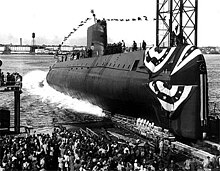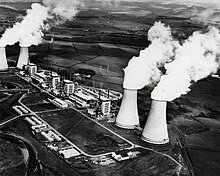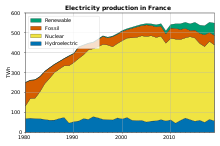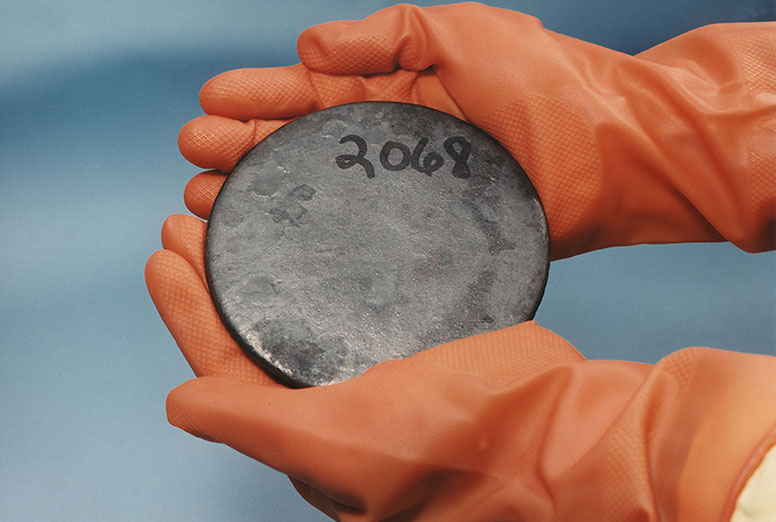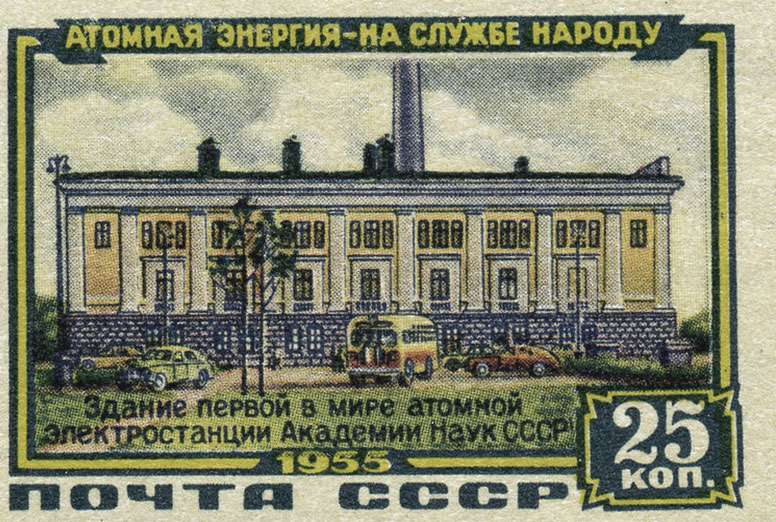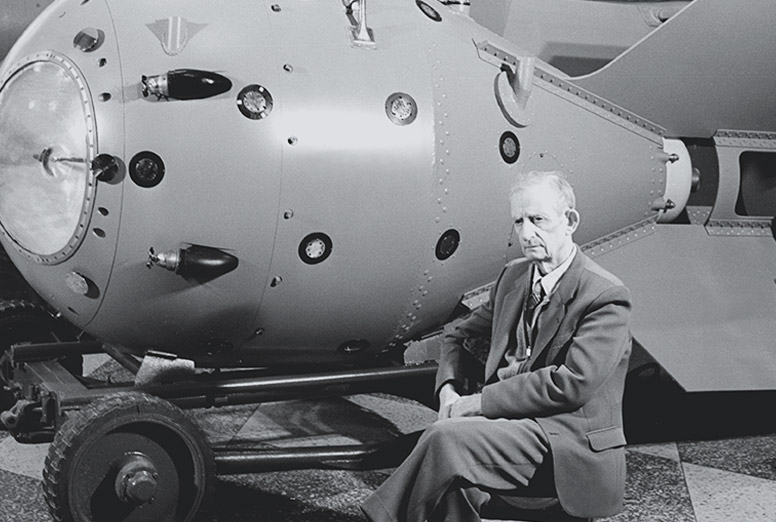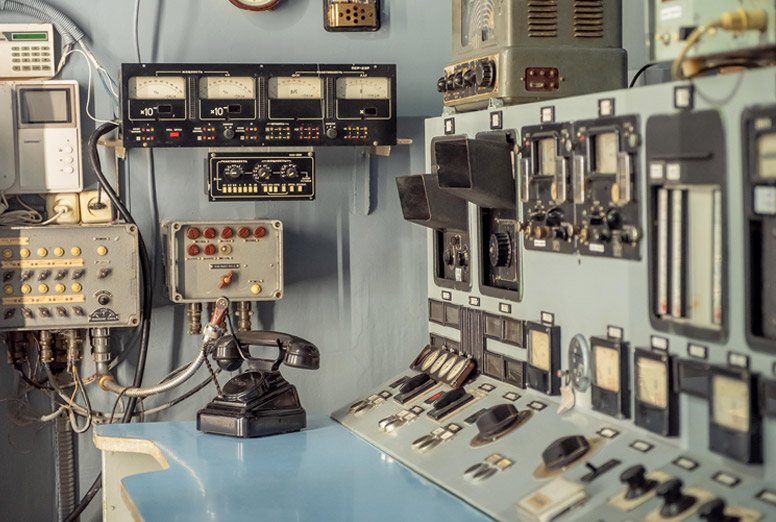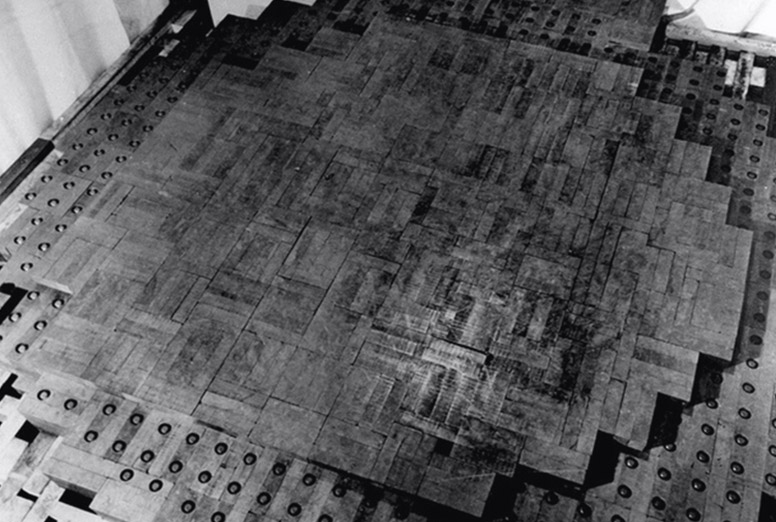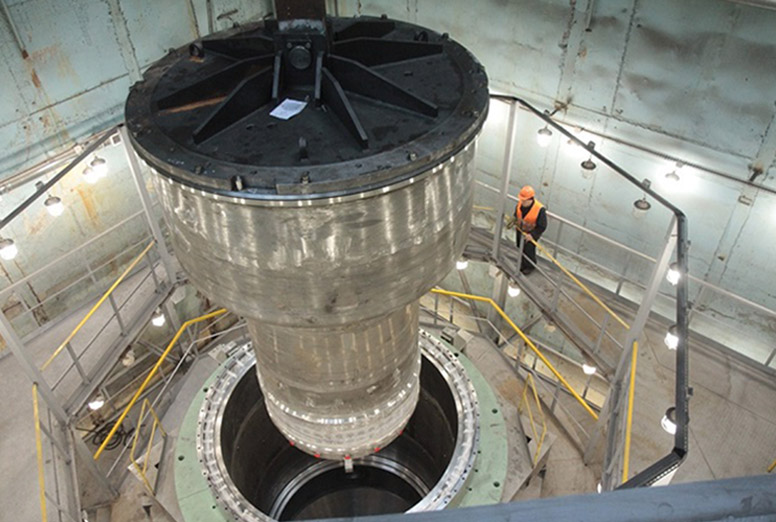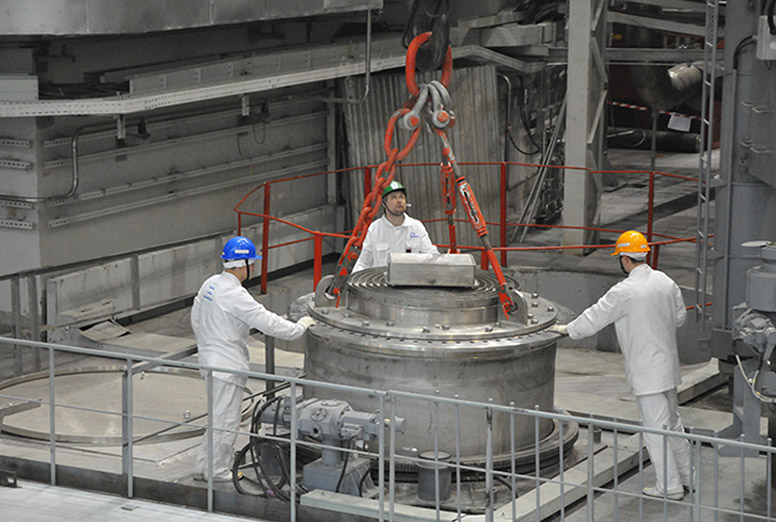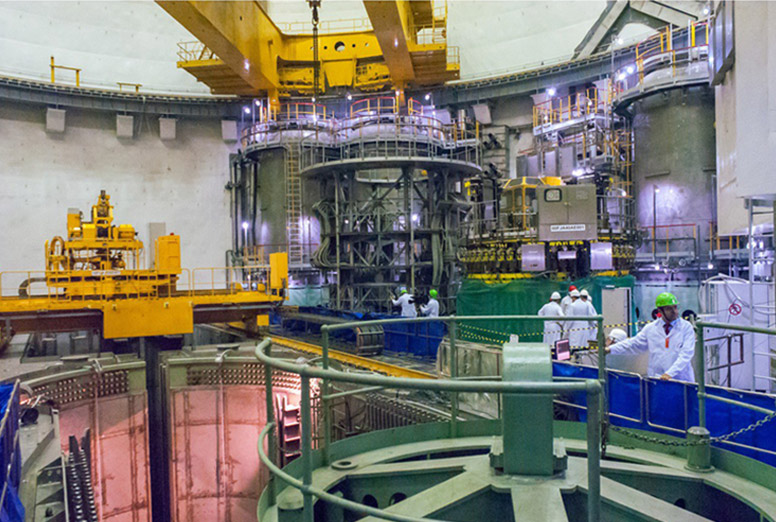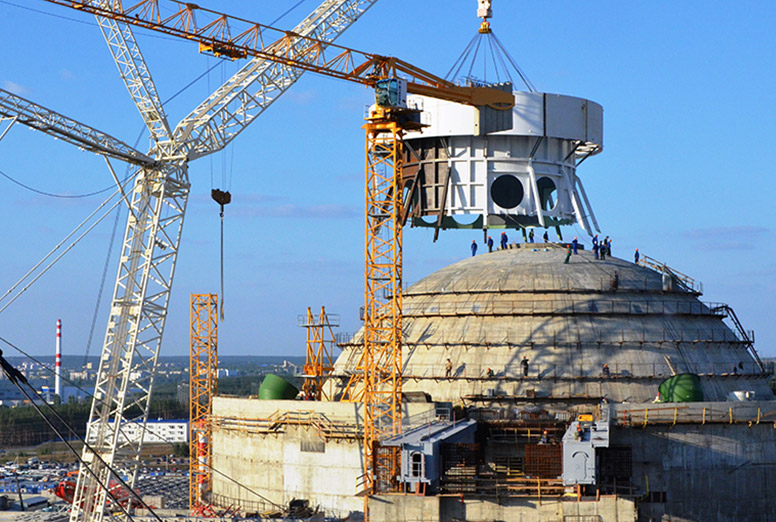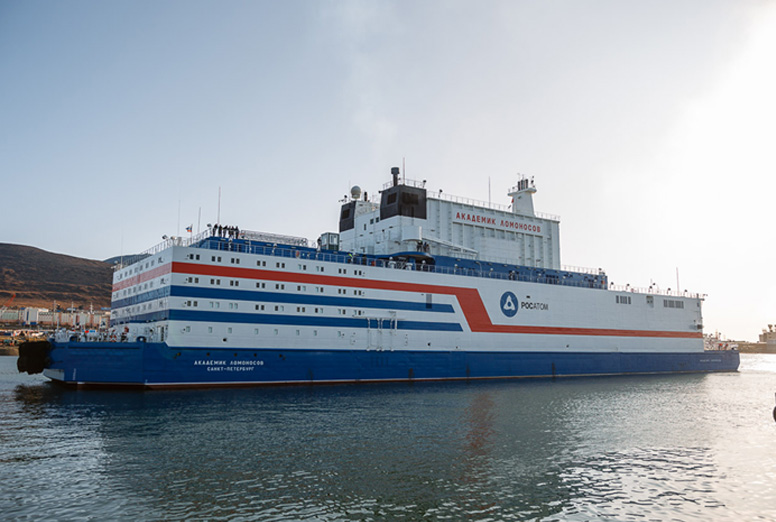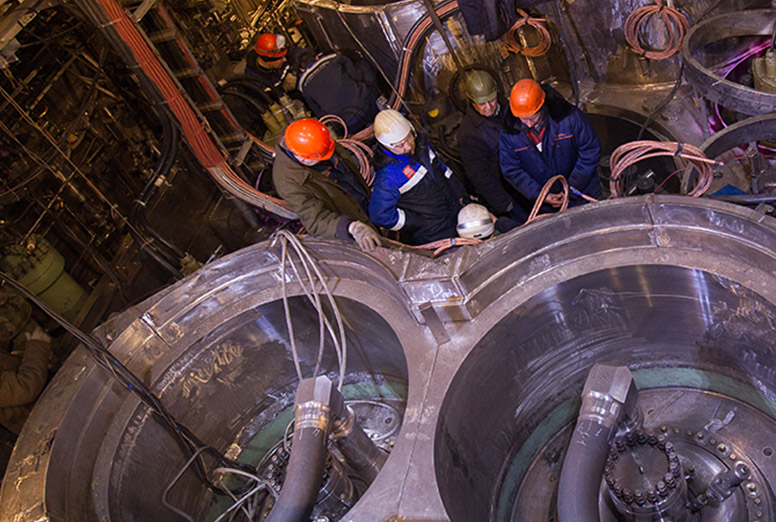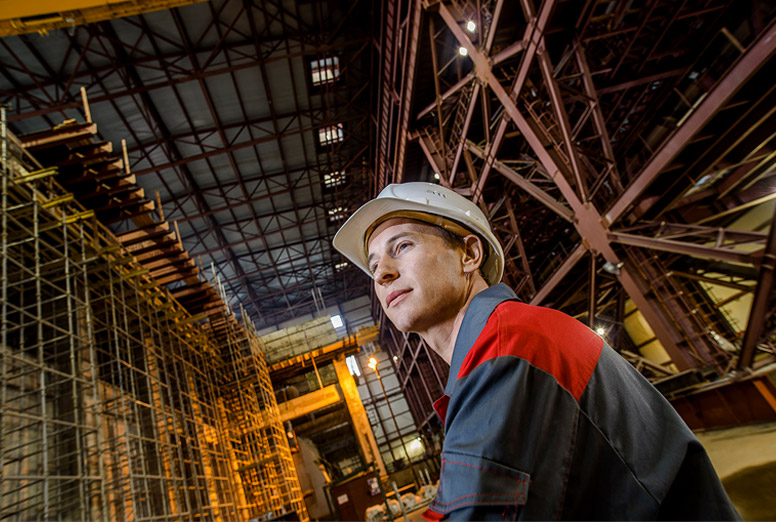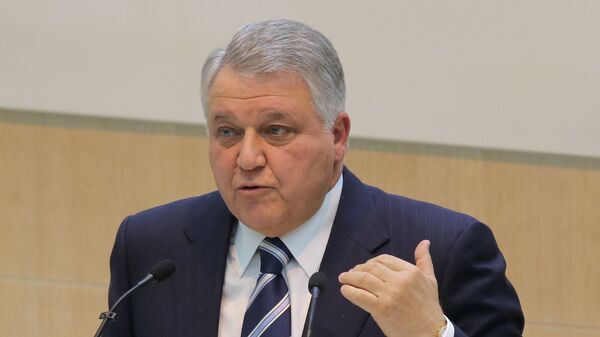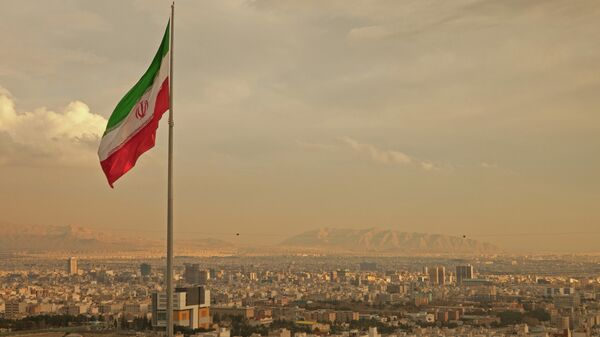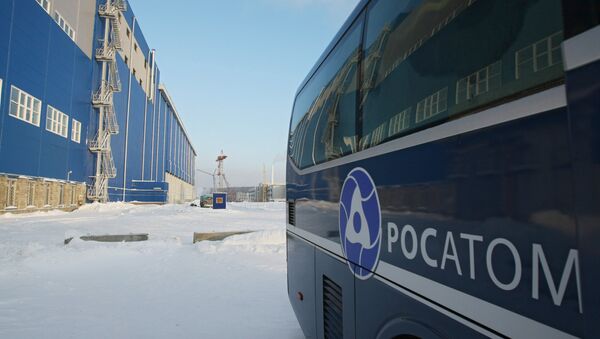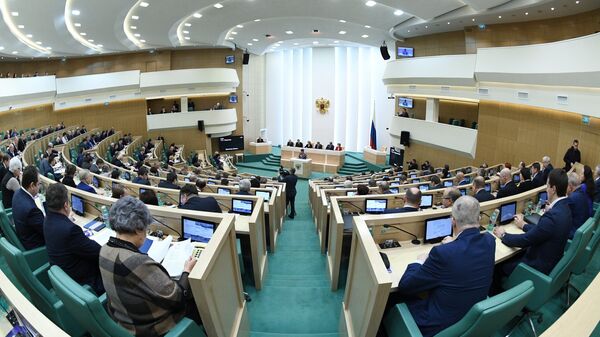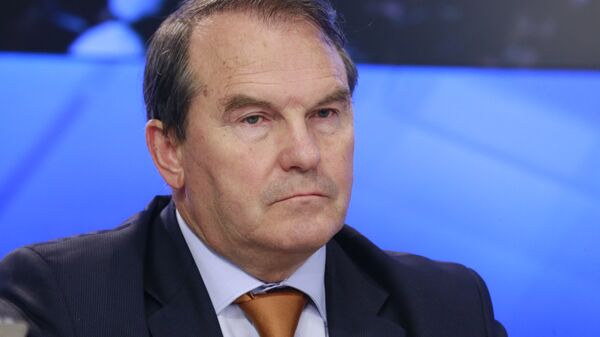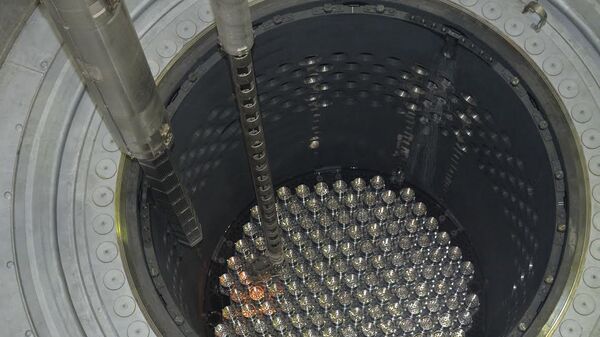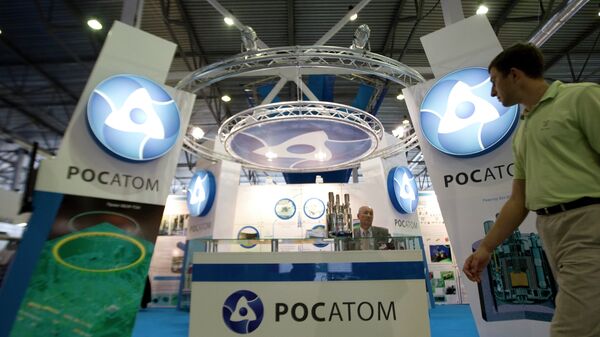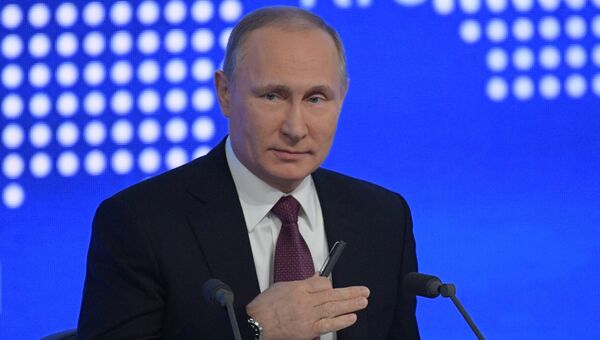This is a history of nuclear power as realized through the first artificial fission of atoms that would lead to the Manhattan Project and, eventually, to using nuclear fission to generate electricity.
Origins[edit]
In 1932, physicists John Cockcroft, Ernest Walton, and Ernest Rutherford discovered that when lithium atoms were «split» by protons from a proton accelerator, immense amounts of energy were released in accordance with the principle of mass–energy equivalence.[1] However, they and other nuclear physics pioneers Niels Bohr and Albert Einstein believed harnessing the power of the atom for practical purposes anytime in the near future was unlikely.[2] The same year, Rutherford’s doctoral student James Chadwick discovered the neutron.[3] Experiments bombarding materials with neutrons led Frédéric and Irène Joliot-Curie to discover induced radioactivity in 1934, which allowed the creation of radium-like elements.[4] Further work by Enrico Fermi in the 1930s focused on using slow neutrons to increase the effectiveness of induced radioactivity. Experiments bombarding uranium with neutrons led Fermi to believe he had created a new transuranic element, which was dubbed hesperium.[5]
In 1938, German chemists Otto Hahn[6] and Fritz Strassmann, along with Austrian physicist Lise Meitner[7] and Meitner’s nephew, Otto Robert Frisch,[8] conducted experiments with the products of neutron-bombarded uranium, as a means of further investigating Fermi’s claims. They determined that the relatively tiny neutron split the nucleus of the massive uranium atoms into two roughly equal pieces, contradicting Fermi.[5] This was an extremely surprising result; all other forms of nuclear decay involved only small changes to the mass of the nucleus, whereas this process—dubbed «fission» as a reference to biology—involved a complete rupture of the nucleus. Numerous scientists, including Leó Szilárd, who was one of the first, recognized that if fission reactions released additional neutrons, a self-sustaining nuclear chain reaction could result.[9][10] Once this was experimentally confirmed and announced by Frédéric Joliot-Curie in 1939, scientists in many countries (including the United States, the United Kingdom, France, Germany, and the Soviet Union) petitioned their governments for support of nuclear fission research, just on the cusp of World War II, for the development of a nuclear weapon.[11]
First nuclear reactor[edit]
In the United States, where Fermi and Szilárd had both emigrated, the discovery of the nuclear chain reaction led to the creation of the first man-made reactor, the research reactor known as Chicago Pile-1, which achieved criticality on December 2, 1942. The reactor’s development was part of the Manhattan Project, the Allied effort to create atomic bombs during World War II. It led to the building of larger single-purpose production reactors, such as the X-10 Pile, for the production of weapons-grade plutonium for use in the first nuclear weapons. The United States tested the first nuclear weapon in July 1945, the Trinity test, with the atomic bombings of Hiroshima and Nagasaki taking place one month later.
In August 1945, the first widely distributed account of nuclear energy, the pocketbook The Atomic Age,[14] was released. It discussed the peaceful future uses of nuclear energy and depicted a future where fossil fuels would go unused. Nobel laureate Glenn Seaborg, who later chaired the United States Atomic Energy Commission, is quoted as saying «there will be nuclear powered earth-to-moon shuttles, nuclear powered artificial hearts, plutonium heated swimming pools for SCUBA divers, and much more».[15]
In the same month, with the end of the war, Seaborg and others would file hundreds of initially classified patents,[10] most notably Eugene Wigner and Alvin Weinberg’s Patent #2,736,696, on a conceptual light water reactor (LWR) that would later become the United States’ primary reactor for naval propulsion and later take up the greatest share of the commercial fission-electric landscape.[16]
The United Kingdom, Canada,[17] and the USSR proceeded to research and develop nuclear energy over the course of the late 1940s and early 1950s.
Electricity was generated for the first time by a nuclear reactor on December 20, 1951, at the EBR-I experimental station near Arco, Idaho, which initially produced about 100 kW.[18][19]
In 1953, American President Dwight Eisenhower gave his «Atoms for Peace» speech at the United Nations, emphasizing the need to develop «peaceful» uses of nuclear power quickly. This was followed by the Atomic Energy Act of 1954 which allowed rapid declassification of U.S. reactor technology and encouraged development by the private sector.
The F-1 (from «First Physical Reactor») was a research reactor operated by the Kurchatov Institute in Moscow, Russia. When started on December 25, 1946, it became the first nuclear reactor in Europe to achieve a self-sustaining nuclear chain reaction.[20]
Early years[edit]
The first organization to develop nuclear power was the U.S. Navy, with the S1W reactor for the purpose of propelling submarines and aircraft carriers. The first nuclear-powered submarine, USS Nautilus, was put to sea in January 1954.[22][23] The S1W reactor was a Pressurized Water Reactor. This design was chosen because it was simpler, more compact, and easier to operate compared to alternative designs, thus more suitable to be used in submarines. This decision would result in the PWR being the reactor of choice also for power generation, thus having a lasting impact on the civilian electricity market in the years to come.[24]
The United States Navy Nuclear Propulsion design and operation community, under Rickover’s style
On June 27, 1954, the Obninsk Nuclear Power Plant in the USSR became the world’s first nuclear power plant to generate electricity for a power grid, producing around 5 megawatts of electric power.[25]
The world’s first commercial nuclear power station, Calder Hall at Windscale, England was connected to the national power grid on 27 August 1956. In common with a number of other generation I reactors, the plant had the dual purpose of producing electricity and plutonium-239, the latter for the nascent nuclear weapons program in Britain.[26] It had an initial capacity of 50 MW per reactor (200 MW total),[27][28] it was the first of a fleet of dual-purpose MAGNOX reactors.[29]
The U.S. Army Nuclear Power Program formally commenced in 1954. Under its management, the 2 megawatt SM-1, at Fort Belvoir, Virginia, was the first in the United States to supply electricity in an industrial capacity to the commercial grid (VEPCO), in April 1957.[30]
The first commercial nuclear station to become operational in the United States was the 60 MW Shippingport Reactor (Pennsylvania), in December 1957.[31]
Originating from a cancelled nuclear-powered aircraft carrier contract, the plant used a PWR reactor design.[32] Its early adoption, technological lock-in,[33] and familiarity among retired naval personnel, established the PWR as the predominant civilian reactor design, that it still retains today in the United States.
In 1957 EURATOM was launched alongside the European Economic Community (the latter is now the European Union). The same year also saw the launch of the International Atomic Energy Agency (IAEA).
The first major accident at a nuclear reactor occurred at the 3 MW SL-1, a U.S. Army experimental nuclear power reactor at the National Reactor Testing Station, Idaho National Laboratory. It was derived from the Borax Boiling water reactor (BWR) design and it first achieved operational criticality and connection to the grid in 1958.
For reasons unknown, in 1961 a technician removed a control rod about 22 inches farther than the prescribed 4 inches. This resulted in a steam explosion which killed the three crew members and caused a meltdown.[34][35] The event was eventually rated at 4 on the seven-level INES scale. On September 16, 1967, the Pathfinder Nuclear Station near Sioux Falls, South Dakota, open for about a year, suffered an accident which caused the one year old plant to be retired permanently when an operator opened a valve too fast.
Another serious accident happened in 1968, when one of the two liquid-metal-cooled reactors on board the Soviet submarine K-27 underwent a fuel element failure, with the emission of gaseous fission products into the surrounding air. This resulted in 9 crew fatalities and 83 injuries.[36]
Development and early opposition to nuclear power[edit]

- PWR: 277 (63.2%)
- BWR: 80 (18.3%)
- GCR: 15 (3.4%)
- PHWR: 49 (11.2%)
- LWGR: 15 (3.4%)
- FBR: 2 (0.5%)
The total global installed nuclear capacity initially rose relatively quickly, rising from less than 1 gigawatt (GW) in 1960 to 100 GW in the late 1970s, and 300 GW in the late 1980s. Since the late 1980s worldwide capacity has risen much more slowly, reaching 366 GW in 2005. Between around 1970 and 1990, more than 50 GW of capacity was under construction (peaking at over 150 GW in the late 1970s and early 1980s)—in 2005, around 25 GW of new capacity was planned. More than two-thirds of all nuclear plants ordered after January 1970 were eventually cancelled.[22] A total of 63 nuclear units were canceled in the United States between 1975 and 1980.[38]
In 1972 Alvin Weinberg, co-inventor of the light water reactor design (the most common nuclear reactors today) was fired from his job at Oak Ridge National Laboratory by the Nixon administration, «at least in part» over his raising of concerns about the safety and wisdom of ever larger scaling-up of his design, especially above a power rating of ~500 MWe, as in a loss of coolant accident scenario, the decay heat generated from such large compact solid-fuel cores was thought to be beyond the capabilities of passive/natural convection cooling to prevent a rapid fuel rod melt-down and resulting in then, potential far reaching fission product pluming. While considering the LWR, well suited at sea for the submarine and naval fleet, Weinberg did not show complete support for its use by utilities on land at the power output that they were interested in for supply scale reasons, and would request for a greater share of AEC research funding to evolve his team’s demonstrated,[39] Molten-Salt Reactor Experiment, a design with greater inherent safety in this scenario and with that an envisioned greater economic growth potential in the market of large-scale civilian electricity generation.[40][41][42]
Similar to the earlier BORAX reactor safety experiments, conducted by Argonne National Laboratory,[43] in 1976 Idaho National Laboratory began a test program focused on LWR reactors under various accident scenarios, with the aim of understanding the event progression and mitigating steps necessary to respond to a failure of one or more of the disparate systems, with much of the redundant back-up safety equipment and nuclear regulations drawing from these series of destructive testing investigations.[44]
During the 1970s and 1980s rising economic costs (related to extended construction times largely due to regulatory changes and pressure-group litigation)[45] and falling fossil fuel prices made nuclear power plants then under construction less attractive. In the 1980s in the U.S. and 1990s in Europe, the flat electric grid growth and electricity liberalization also made the addition of large new baseload energy generators economically unattractive.
thermofossil
hydroelectric
nuclear
Other renewables
The 1973 oil crisis had a significant effect on countries, such as France and Japan, which had relied more heavily on oil for electric generation (39%[46] and 73% respectively) to invest in nuclear power.[47]
The French plan, known as the Messmer plan, was for the complete independence from oil, with an envisaged construction of 80 reactors by 1985 and 170 by 2000.[48]
France would construct 25 fission-electric stations, installing 56 mostly PWR design reactors over the next 15 years, though foregoing the 100 reactors initially charted in 1973, for the 1990s.[49][50]
In 2019, 71% of French electricity was generated by 58 reactors, the highest percentage by any nation in the world.[51]
Some local opposition to nuclear power emerged in the U.S. in the early 1960s, beginning with the proposed Bodega Bay station in California, in 1958, which produced conflict with local citizens and by 1964 the concept was ultimately abandoned.[52] In the late 1960s some members of the scientific community began to express pointed concerns.[53] These anti-nuclear concerns related to nuclear accidents, nuclear proliferation, nuclear terrorism and radioactive waste disposal.[54] In the early 1970s, there were large protests about a proposed nuclear power plant in Wyhl, Germany. The project was cancelled in 1975 the anti-nuclear success at Wyhl inspired opposition to nuclear power in other parts of Europe and North America.[55][56] By the mid-1970s anti-nuclear activism gained a wider appeal and influence, and nuclear power began to become an issue of major public protest.[57][58] In some countries, the nuclear power conflict «reached an intensity unprecedented in the history of technology controversies».[59][60] In May 1979, an estimated 70,000 people, including then governor of California Jerry Brown, attended a march against nuclear power in Washington, D.C.[61] Anti-nuclear power groups emerged in every country that had a nuclear power programme.
Globally during the 1980s one new nuclear reactor started up every 17 days on average.[62]
Regulations, pricing and accidents[edit]
In the early 1970s, the increased public hostility to nuclear power in the United States lead the United States Atomic Energy Commission and later the Nuclear Regulatory Commission to lengthen the license procurement process, tighten engineering regulations and increase the requirements for safety equipment.[63][64] Together with relatively minor percentage increases in the total quantity of steel, piping, cabling and concrete per unit of installed nameplate capacity, the more notable changes to the regulatory open public hearing-response cycle for the granting of construction licenses, had the effect of what was once an initial 16 months for project initiation to the pouring of first concrete in 1967, escalating to 32 months in 1972 and finally 54 months in 1980, which ultimately, quadrupled the price of power reactors.[65][66]
Utility proposals in the U.S for nuclear generating stations, peaked at 52 in 1974, fell to 12 in 1976 and have never recovered,[67] in large part due to the pressure-group litigation strategy, of launching lawsuits against each proposed U.S construction proposal, keeping private utilities tied up in court for years, one of which having reached the supreme court in 1978 (see Vermont Yankee Nuclear Power Corp. v. Natural Resources Defense Council, Inc.[68] With permission to build a nuclear station in the U.S. eventually taking longer than in any other industrial country, the spectre facing utilities of having to pay interest on large construction loans while the anti-nuclear movement used the legal system to produce delays, increasingly made the viability of financing construction, less certain.[67] By the close of the 1970s it became clear that nuclear power would not grow nearly as dramatically as once believed.
Over 120 reactor proposals in the United States were ultimately cancelled[69] and the construction of new reactors ground to a halt. A cover story in the February 11, 1985, issue of Forbes magazine commented on the overall failure of the U.S. nuclear power program, saying it «ranks as the largest managerial disaster in business history».[70]
According to some commentators, the 1979 accident at Three Mile Island played a major part in the reduction in the number of new plant constructions in many other countries.[53] According to the Nuclear Regulatory Commission (NRC), the Three Mile Island accident was the most serious accident in «U.S. commercial nuclear power plant operating history, even though it led to no deaths or injuries to plant workers or members of the nearby community.»[71] The regulatory uncertainty and delays eventually resulted in an escalation of construction related debt that led to the bankruptcy of Seabrook’s major utility owner, Public Service Company of New Hampshire.[72] At the time, the fourth largest bankruptcy in United States corporate history.[73]
Among American engineers, the cost increases from implementing the regulatory changes that resulted from the TMI accident were, when eventually finalized, only a few percent of total construction costs for new reactors, primarily relating to the prevention of safety systems from being turned off. With the most significant engineering result of the TMI accident, the recognition that better operator training was needed and that the existing emergency core cooling system of PWRs worked better in a real-world emergency than members of the anti-nuclear movement had routinely claimed.[63][74]
The already slowing rate of new construction along with the shutdown in the 1980s of two existing demonstration nuclear power stations in the Tennessee Valley, United States, when they could not economically meet the NRC’s new tightened standards, shifted electricity generation to coal-fired power plants.[75] In 1977, following the first oil shock, U.S. President Jimmy Carter made a speech calling the energy crisis the «moral equivalent of war» and prominently supporting nuclear power. However, nuclear power could not compete with cheap oil and gas, particularly after public opposition and regulatory hurdles made new nuclear prohibitively expensive.[76]
In 1982, amongst a backdrop of ongoing protests directed at the construction of the first commercial scale breeder reactor in France, a later member of the Swiss Green Party fired five RPG-7 rocket-propelled grenades at the still under construction containment building of the Superphenix reactor. Two grenades hit and caused minor damage to the reinforced concrete outer shell. It was the first time protests reached such heights. After examination of the superficial damage, the prototype fast breeder reactor started and operated for over a decade.[77]
Chernobyl disaster[edit]
The Chernobyl disaster occurred on Saturday 26 April 1986, at the No. 4 reactor in the Chernobyl Nuclear Power Plant, near the city of Pripyat in the north of the Ukrainian SSR.[78] It is considered as the worst nuclear disaster in history both in terms of cost and casualties.[79] The initial emergency response, together with later decontamination of the environment, ultimately involved more than 500,000 personnel and cost an estimated 18 billion Soviet rubles—roughly US$68 billion in 2019, adjusted for inflation.[80][81]
According to some commentators, the Chernobyl disaster played a major part in the reduction in the number of new plant constructions in many other countries.[53]
Unlike the Three Mile Island accident the much more serious Chernobyl accident did not increase regulations or engineering changes affecting Western reactors; because the RBMK design, which lacks safety features such as «robust» containment buildings, was only used in the Soviet Union.[82] Over 10 RBMK reactors are still in use today. However, changes were made in both the RBMK reactors themselves (use of a safer enrichment of uranium) and in the control system (preventing safety systems being disabled), amongst other things, to reduce the possibility of a similar accident.[83]
Russia now largely relies upon, builds and exports a variant of the PWR, the VVER, with over 20 in use today.
An international organization to promote safety awareness and the professional development of operators in nuclear facilities, the World Association of Nuclear Operators (WANO), was created as a direct outcome of the 1986 Chernobyl accident. The organization was created with the intent to share and grow the adoption of nuclear safety culture, technology and community, where before there was an atmosphere of cold war secrecy.
Numerous countries, including Austria (1978), Sweden (1980) and Italy (1987) (influenced by Chernobyl) have voted in referendums to oppose or phase out nuclear power.
Nuclear renaissance[edit]
Nuclear power generation (TWh)[84]
Operational nuclear reactors[84]
In the early 2000s, the nuclear industry was expecting a nuclear renaissance, an increase in the construction of new reactors, due to concerns about carbon dioxide emissions.[85] However, in 2009, Petteri Tiippana, the director of nuclear power plant division in the Finnish Radiation and Nuclear Safety Authority, told the BBC that it was difficult to deliver a Generation III reactor project on schedule because builders were not used to working to the exacting standards required on nuclear construction sites, since so few new reactors had been built in recent years.[86]
The Olkiluoto 3 was the first EPR, a modernized PWR design, to start construction. Problems with workmanship and supervision have created costly delays. The reactor is estimated to cost three times the initial estimate and will be delivered over 10 years behind schedule.[87]
In 2018 the MIT Energy Initiative study on the future of nuclear energy concluded that, together with the strong suggestion that government should financially support development and demonstration of new Generation IV nuclear technologies, for a worldwide renaissance to commence, a global standardization of regulations needs to take place, with a move towards serial manufacturing of standardized units akin to the other complex engineering field of aircraft and aviation. At present it is common for each country to demand bespoke changes to the design to satisfy varying national regulatory bodies, often to the benefit of domestic engineering supply firms. The report goes on to note that the most cost-effective projects have been built with multiple (up to six) reactors per site using a standardized design, with the same component suppliers and construction crews working on each unit, in a continuous work flow.[88]
Fukushima Daiichi disaster[edit]
Following the Tōhoku earthquake on 11 March 2011, one of the largest earthquakes ever recorded, and a subsequent tsunami off the coast of Japan, the Fukushima Daiichi Nuclear Power Plant suffered three core meltdowns due to failure of the emergency cooling system for lack of electricity supply. This resulted in the most serious nuclear accident since the Chernobyl disaster.
The Fukushima Daiichi nuclear accident prompted a re-examination of nuclear safety and nuclear energy policy in many countries[89] and raised questions among some commentators over the future of the renaissance.[90][85]
Germany approved plans to close all its reactors by 2022. (Following the energy crisis caused by the russian invasion of Ukraine, Germany now plans to keep reactors running until April 2023[91]) Italian nuclear energy plans[92] ended when Italy banned the generation, but not consumption, of nuclear electricity in a June 2011 referendum.[93][89]
China, Switzerland, Israel, Malaysia, Thailand, United Kingdom, and the Philippines reviewed their nuclear power programs.[94][95][96][97]
In 2011 the International Energy Agency halved its prior estimate of new generating capacity to be built by 2035.[98][99]
Nuclear power generation had the biggest ever fall year-on-year in 2012, with nuclear power plants globally producing 2,346 TWh of electricity, a drop of 7% from 2011.
This was caused primarily by the majority of Japanese reactors remaining offline that year and the permanent closure of eight reactors in Germany.[100]
Post-Fukushima[edit]
The Associated Press and Reuters reported in 2011 the suggestion that the safety and survival of the younger Onagawa Nuclear Power Plant, the closest reactor facility to the epicenter and on the coast, demonstrate that it is possible for nuclear facilities to withstand the greatest natural disasters. The Onagawa plant was also said to show that nuclear power can retain public trust, with the surviving residents of the town of Onagawa taking refuge in the gymnasium of the nuclear facility following the destruction of their town.[101][102]
In February 2012, the U.S. NRC approved the construction of 2 reactors at the Vogtle Electric Generating Plant, the first approval in 30 years.[103][104]
In August 2015, following 4 years of near zero fission-electricity generation, Japan began restarting its nuclear reactors, after safety upgrades were completed, beginning with Sendai Nuclear Power Plant.[105]
By 2015, the IAEA’s outlook for nuclear energy had become more promising.
«Nuclear power is a critical element in limiting greenhouse gas emissions,» the agency noted, and «the prospects for nuclear energy remain positive in the medium to long term despite a negative impact in some countries in the aftermath of the [Fukushima-Daiichi] accident…it is still the second-largest source worldwide of low-carbon electricity.
And the 72 reactors under construction at the start of last year were the most in 25 years.»[106]
As of 2015, the global trend was for new nuclear power stations coming online to be balanced by the number of old plants being retired.[107] Eight new grid connections were completed by China in 2015.[108][109]
In 2016, the BN-800 sodium cooled fast reactor in Russia, began commercial electricity generation, while plans for a BN-1200 were initially conceived the future of the fast reactor program in Russia awaits the results from MBIR, an under construction multi-loop Generation research facility for testing the chemically more inert lead, lead-bismuth and gas coolants, it will similarly run on recycled MOX (mixed uranium and plutonium oxide) fuel. An on-site pyrochemical processing, closed fuel-cycle facility, is planned, to recycle the spent fuel/»waste» and reduce the necessity for a growth in uranium mining and exploration. In 2017 the manufacture program for the reactor commenced with the facility open to collaboration under the «International Project on Innovative Nuclear Reactors and Fuel Cycle», it has a construction schedule, that includes an operational start in 2020. As planned, it will be the world’s most-powerful research reactor.[110]
In 2015, the Japanese government committed to the aim of restarting its fleet of 40 reactors by 2030 after safety upgrades, and to finish the construction of the Generation III Ōma Nuclear Power Plant.[111]
This would mean that approximately 20% of electricity would come from nuclear power by 2030. As of 2018, some reactors have restarted commercial operation following inspections and upgrades with new regulations.[112] While South Korea has a large nuclear power industry, the new government in 2017, influenced by a vocal anti-nuclear movement,[113] committed to halting nuclear development after the completion of the facilities presently under construction.[114][115][116]
The bankruptcy of Westinghouse in March 2017 due to US$9 billion of losses from the halting of construction at Virgil C. Summer Nuclear Generating Station, in the U.S. is considered an advantage for eastern companies, for the future export and design of nuclear fuel and reactors.[117]
In 2016, the U.S. Energy Information Administration projected for its «base case» that world nuclear power generation would increase from 2,344 terawatt hours (TWh) in 2012 to 4,500 TWh in 2040. Most of the predicted increase was expected to be in Asia.[118] As of 2018, there are over 150 nuclear reactors planned including 50 under construction.[119] In January 2019, China had 45 reactors in operation, 13 under construction, and plans to build 43 more, which would make it the world’s largest generator of nuclear electricity.[120]
Current prospects[edit]
Zero-emission nuclear power is an important part of the climate change mitigation effort. Under IEA Sustainable Development Scenario by 2030 nuclear power and CCUS would have generated 3900 TWh globally while wind and solar 8100 TWh with the ambition to achieve net-zero CO2 emissions by 2070.[122] In order to achieve this goal on average 15 GWe of nuclear power should have been added annually on average.[123] As of 2019 over 60 GW in new nuclear power plants was in construction, mostly in China, Russia, Korea, India and UAE.[123] Many countries in the world are considering Small Modular Reactors with one in Russia connected to the grid in 2020.
Countries with at least one nuclear power plant in planning phase include Argentina, Brazil, Bulgaria, the Czech Republic, Egypt, Finland, Hungary, India, Kazakhstan, Poland, Saudi Arabia and Uzbekistan.[123]
The future of nuclear power varies greatly between countries, depending on government policies. Some countries, most notably, Germany, have adopted policies of nuclear power phase-out. At the same time, some Asian countries, such as China[120] and India,[124] have committed to rapid expansion of nuclear power. In other countries, such as the United Kingdom[125] and the United States, nuclear power is planned to be part of the energy mix together with renewable energy.
Nuclear energy may be one solution to providing clean power while also reversing the impact fossil fuels have had on our climate.[126] These plants would capture carbon dioxide and create a clean energy source with zero emissions, making a carbon-negative process. Scientists propose that 1.8 million lives have already been saved by replacing fossil fuel sources with nuclear power.[127]
As of 2019 the cost of extending plant lifetimes is competitive with other electricity generation technologies, including new solar and wind projects.[128] In the United States, licenses of almost half of the operating nuclear reactors have been extended to 60 years.[129]
The U.S. NRC and the U.S. Department of Energy have initiated research into light water reactor sustainability which is hoped will lead to allowing extensions of reactor licenses beyond 60 years, provided that safety can be maintained, to increase energy security and preserve low-carbon generation sources. Research into nuclear reactors that can last 100 years, known as Centurion Reactors, is being conducted.[130]
As of 2020, a number of US nuclear power plants were cleared by Nuclear Regulatory Commission for operations up to 80 years.[131]
Following the 2022 Russian invasion of Ukraine, the situation has changed. With the Versailles declaration agreed in March 2022, the EU leaders of the 27 member states agreed to phase out the EU’s dependence on Russian fossil fuels as soon as possible.[132]
The World Economic Forum has published energy policy changes, following the Russian Invasion.[133]
Korea is planning to «increase renewables in electricity […] [and] nuclear power to over 30%».[133] Japan has decided to «restart nuclear power plants aligned with the 6th Strategic Energy Plan […]».[133]
Germany decided to postpone the shutdown of its three remaining nuclear power plants until April 2023.[134]
References[edit]
- ^ «April 14, 1932: Cockcroft and Walton Split the Atom». APS News. Retrieved 21 April 2023.
- ^ Rhodes. Making of the Atomic Bomb. p. 228.
- ^ «80 years since discovery of the neutron». Phys.org. June 15, 2012.
- ^ Fassò, Alberto; Silari, Marco; Ulrici, Luisa (October 1999). Predicting Induced Radioactivity at High Energy Accelerators (PDF). Ninth International Conference on Radiation Shielding, Tsukuba, Japan, October 17–22, 1999. Stanford, CA: SLAC National Accelerator Laboratory, Stanford University. SLAC-PUB-8215. Retrieved December 10, 2018.
- ^ a b «Neptunium». Vanderkrogt.net. Retrieved 2013-06-22.
- ^ «Otto Hahn, The Nobel Prize in Chemistry, 1944». Nobelprize.org. Retrieved 2007-11-01.
- ^ «Otto Hahn, Fritz Strassmann, and Lise Meitner». Science History Institute. June 2016. Retrieved March 20, 2018.
- ^ «Otto Robert Frisch». Nuclearfiles.org. Archived from the original on 2017-05-25. Retrieved 2007-11-01.
- ^ https://web.archive.org/web/20160310165547/http://alexwellerstein.com/atomic_patents/
- ^ a b Wellerstein, Alex (2008). «Inside the atomic patent office». Bulletin of the Atomic Scientists. 64 (2): 26–31. Bibcode:2008BuAtS..64b..26W. doi:10.2968/064002008.
- ^ «The Einstein Letter». Atomicarchive.com. Retrieved 2013-06-22.
- ^ Argonne’s Nuclear Science and Technology Legacy, Reactors: Modern-Day Alchemy
- ^ Fast Reactor Technology. EBR-I (Experimental Breeder Reactor-I)
- ^ «The Atomic Age Opens». Retrieved 21 April 2023.
- ^ Wendt, Gerald; Geddes, Donald Porter (1945). The Atomic Age Opens. New York: Pocket Books.
- ^ «The USS Seawolf Sodium Cooled Reactor Submarine» (PDF). May 17, 2012.Lecture by Eric P. Loewen, Ph.D. President American Nuclear Society
- ^ Bain, Alastair S.; et al. (1997). Canada enters the nuclear age: a technical history of Atomic Energy of Canada. Magill-Queen’s University Press. p. ix. ISBN 978-0-7735-1601-4.
- ^ «Reactors Designed by Argonne National Laboratory: Fast Reactor Technology». U.S. Department of Energy, Argonne National Laboratory. 2012. Retrieved 2012-07-25.
- ^ «Reactor Makes Electricity.» Popular Mechanics, March 1952, p. 105.
- ^ «The World’s Oldest Operating Reactor: The Russian F-1». The Nuclear Weapon Archive. Retrieved 25 December 2010.
- ^ «Nautilus (SSN-571)». US Naval History and Heritage Command (US Navy).
- ^ a b «50 Years of Nuclear Energy» (PDF). International Atomic Energy Agency. Retrieved 2006-11-09.
- ^ «STR (Submarine Thermal Reactor) in «Reactors Designed by Argonne National Laboratory: Light Water Reactor Technology Development»«. U.S. Department of Energy, Argonne National Laboratory. 2012. Retrieved 2012-07-25.
- ^ Rockwell, Theodore (1992). The Rickover Effect. Naval Institute Press. p. 162. ISBN 978-1-55750-702-0.
- ^ «From Obninsk Beyond: Nuclear Power Conference Looks to Future». International Atomic Energy Agency. 2004-06-23. Retrieved 2006-06-27.
- ^ C.N. Hill, «An Atomic Empire: A Technical History of the Rise and Fall of the British Atomic Energy Programme» (World Scientific, 2013).
- ^ Kragh, Helge (1999). Quantum Generations: A History of Physics in the Twentieth Century. Princeton, NJ: Princeton University Press. p. 286. ISBN 978-0-691-09552-3.
- ^ «On This Day: October 17». BBC News. 1956-10-17. Retrieved 2006-11-09.
- ^ The Early Years of Nuclear Energy in Britain Aarush Selvan. Stanford course work 2018. C. N. Hill, An Atomic Empire: A Technical History of the Rise and Fall of the British Atomic Energy Programme, Fred Roberts, 60 Years of Nuclear History, Britain’s Hidden Agenda
- ^ «SM-1 Nuclear Power Plant, VA» (PDF). U.S. Army Corps of Engineers. 2015-02-01. Retrieved 2018-11-17.
- ^ «History of Emergency Preparedness». United States Nuclear Regulatory Commission. 2018-06-12. Retrieved 2018-11-17.
- ^ Nuclear Reactions: Science and Trans-Science, American Institute of Physics 1992. Weinberg
- ^ Out of options A surprising culprit in the nuclear crisis
- ^ IDO-19313: Additional Analysis of the SL-1 Excursion Archived 2011-09-27 at the Wayback Machine Final Report of Progress July through October 1962, November 21, 1962, Flight Propulsion Laboratory Department, General Electric Company, Idaho Falls, Idaho, U.S. Atomic Energy Commission, Division of Technical Information.
- ^ McKeown, William (2003). Idaho Falls: The Untold Story of America’s First Nuclear Accident. Toronto: ECW Press. ISBN 978-1-55022-562-4.
- ^ Johnston, Robert (2007-09-23). «Deadliest radiation accidents and other events causing radiation casualties». Database of Radiological Incidents and Related Events.
- ^ «Nuclear Power Reactors in the World – 2015 Edition» (PDF). International Atomic Energy Agency (IAEA). Retrieved 26 October 2017.
- ^ The Changing Structure of the Electric Power Industry p. 110.
- ^ Video: Molten Salt Reactor Experiment. Produced in 1969 by Oak Ridge National Laboratory for the United States Atomic Energy Commission[dead link]
- ^ The Do-able Molten Salt Reactor a time for courageous impatience
- ^ «Why did the US abandon a lead in reactor design?». Physics Today. 2015. doi:10.1063/PT.5.2029.
- ^ Siemer, Darryl D. (March 2015). «Why the molten salt fast reactor (MSFR) is the ‘best’ Gen IV reactor». Energy Science & Engineering. 3 (2): 83–97. doi:10.1002/ese3.59.
- ^ Argonne’s Nuclear Science and Technology Legacy Multimedia Resources, Borax – Safety experiment on a boiling water reactor
- ^ Tong, L.S. (January 1979). «Water reactor safety research». Progress in Nuclear Energy. 4 (1): 51–95. doi:10.1016/0149-1970(79)90009-X.
- ^ Bernard L. Cohen (1990). The Nuclear Energy Option: An Alternative for the 90s. New York: Plenum Press. ISBN 978-0-306-43567-6.
- ^ «Evolution of Electricity Generation by Fuel» (PDF). Archived from the original (PDF) on 2007-06-14. Retrieved 2007-04-21. (39.4 KB)
- ^ Sharon Beder, ‘The Japanese Situation’, English version of conclusion of Sharon Beder, «Power Play: The Fight to Control the World’s Electricity», Soshisha, Japan, 2006.
- ^ Les physiciens dans le mouvement antinucléaire : entre science, expertise et politique Cahiers d’histoire, published 2007, accessed 2011-04-11
- ^ Palfreman, Jon (1997). «Why the French Like Nuclear Energy». Frontline. Public Broadcasting Service. Retrieved 25 August 2007.
- ^ Rene de Preneuf. «Nuclear Power in France – Why does it Work?». Archived from the original on 13 August 2007. Retrieved 25 August 2007.
- ^ «Nuclear Share of Electricity Generation in 2019». Power Reactor Information System. International Atomic Energy Agency. Retrieved 2021-01-09.
- ^ Garb Paula (1999). «Review of Critical Masses : Opposition to Nuclear Power in California, 1958-1978». Journal of Political Ecology. 6.
- ^ a b c Rüdig, Wolfgang, ed. (1990). Anti-nuclear Movements: A World Survey of Opposition to Nuclear Energy. Detroit, MI: Longman Current Affairs. p. 1. ISBN 978-0-8103-9000-3.
- ^ Brian Martin. Opposing nuclear power: past and present, Social Alternatives, Vol. 26, No. 2, Second Quarter 2007, pp. 43–47.
- ^ Stephen Mills and Roger Williams (1986). Public Acceptance of New Technologies Routledge, pp. 375–376.
- ^ Robert Gottlieb (2005). Forcing the Spring: The Transformation of the American Environmental Movement, Revised Edition, Island Press, p. 237.
- ^ Falk, Jim (1982). Global Fission: The Battle Over Nuclear Power. Melbourne: Oxford University Press. pp. 95–96. ISBN 978-0-19-554315-5.
- ^ Walker, J. Samuel (2004). Three Mile Island: A Nuclear Crisis in Historical Perspective (Berkeley: University of California Press), pp. 10–11.
- ^ Herbert P. Kitschelt (1986). «Political Opportunity and Political Protest: Anti-Nuclear Movements in Four Democracies» (PDF). British Journal of Political Science. 16 (1): 57. doi:10.1017/s000712340000380x. S2CID 154479502.
- ^ Herbert P. Kitschelt (1986). «Political Opportunity and Political Protest: Anti-Nuclear Movements in Four Democracies» (PDF). British Journal of Political Science. 16 (1): 71. doi:10.1017/s000712340000380x. S2CID 154479502.
- ^ Social protest and policy change : ecology, antinuclear, and peace movements in comparative perspective. Rowman & Littlefield. 2004. p. 45. ISBN 978-0-7425-1826-1.
- ^ Thorpe, M.S., Gary S. (2015). AP Environmental Science, 6th ed. Barrons Educational Series. ISBN 978-1-4380-6728-5. ISBN 1-4380-6728-3
- ^ a b Costs of Nuclear Power Plants – What Went Wrong?
- ^ nuclear energy may soon be free from its tangled regulatory web. Washington Examiner
- ^ Costs of Nuclear Power Plants – What went Wrong?
- ^ Per Peterson Metal And Concrete Inputs For Several Nuclear Power Plants.
- ^ a b World’s Atom Energy Lags In Meeting Needs for Power, NYtimes 1979
- ^ Breyer, Stephen (1978). «Vermont Yankee and the Courts’ Role in the Nuclear Energy Controversy». Harvard Law Review. 91 (8): 1833–1845. doi:10.2307/1340411. JSTOR 1340411.
- ^ Nuclear Power: Outlook for New U.S. Reactors p. 3.
- ^ Cook, James (1985-02-11). «Nuclear Follies». Forbes Magazine.
- ^ Federal Government of the United States, U.S. Nuclear Regulatory Commission (2009-08-11). «Backgrounder on the Three Mile Island Accident». Retrieved 2010-07-17.
- ^ Daniels, Lee A. (January 29, 1988). «Bankruptcy Filed by Leading Utility in Seabrook Plant». The New York Times. Retrieved February 5, 2018.
- ^ In re Public Service Company of New Hampshire, Debtor, 88 Bankruptcy Reporter, Docket 88-00043 (US Bankruptcy Court, D. New Hampshire June 22nd, 1988).
- ^ Cohen, Bernard L. (February 2005). «Three Mile Island: A Nuclear Crisis in Historical Perspective (Review)» (PDF). Physics Today. 58 (2): 63–4. doi:10.1063/1.1897526. Archived from the original (PDF) on 2006-02-17.
- ^ Smithsonianmag. Switch from nuclear to coal-fired power. Nature Energy, 2017. DOI: 10.1038/nenergy.2017.51
- ^ Coming Full Circle in Energy, to Nuclear, Eduardo Porter, The New York Times, August 20, 2013.
- ^ Marshall, Eliot (1982). «Super Phénix Unscathed in Rocket Attack». Science. 215 (4533): 641. doi:10.1126/science.215.4533.641.a. PMID 17842382. S2CID 239562507.
- ^ «Chernobyl Nuclear Accident». www.iaea.org. 14 May 2014.
- ^ Black, Richard (12 April 2011). «Fukushima: As Bad as Chernobyl?». BBC News. Archived from the original on 16 August 2011. Retrieved 20 August 2011.
- ^ «Chernobyl: Assessment of Radiological and Health Impact, 2002 update; Chapter II – The release, dispersion and deposition of radionuclides» (PDF). OECD-NEA. 2002. Archived (PDF) from the original on 22 June 2015. Retrieved 3 June 2015.
- ^ Johnson, Thomas (author/director) (2006). The battle of Chernobyl. Play Film / Discovery Channel. (see 1996 interview with Mikhail Gorbachev)
- ^ «Backgrounder on Chernobyl Nuclear Power Plant Accident». Nuclear Regulatory Commission. Retrieved 2006-06-28.
- ^ «RBMK Reactors | reactor bolshoy moshchnosty kanalny | Positive void coefficient». World-nuclear.org. 2009-09-07. Archived from the original on 2013-02-12. Retrieved 2013-06-14.
- ^ a b «Trend in Electricity Supplied». International Atomic Energy Agency. Retrieved 2021-01-09.
- ^ a b Analysis: Nuclear renaissance could fizzle after Japan quake Reuters, published 2011-03-14, accessed 2011-03-14
- ^ Jones, Meirion (25 November 2009). «New UK nuclear stations unlikely to be ready on time». BBC. Retrieved 10 December 2018.
- ^ «Areva’s Finland reactor to start in 2019 after another delay». Reuters. 9 October 2017. Retrieved 3 August 2019.
- ^ Mapping what it would take for a renaissance for nuclear energy
- ^ a b Sylvia Westall & Fredrik Dahl (2011-06-24). «IAEA Head Sees Wide Support for Stricter Nuclear Plant Safety». Scientific American.[dead link]
- ^ Nuclear Renaissance Threatened as Japan’s Reactor Struggles Bloomberg, published March 2011, accessed 2011-03-14
- ^ Hausding, Götz. «Deutscher Bundestag — Bundestag beschließt AKW-Laufzeitverlängerung bis Mitte April 2023». Deutscher Bundestag (in German). Retrieved 2023-01-21.
- ^ «Italy rejoins the nuclear family». World Nuclear News. 2009-07-10. Retrieved 2009-07-17.
- ^ «Italy nuclear: Berlusconi accepts referendum blow». BBC News. 2011-06-14.
- ^ Jo Chandler (2011-03-19). «Is this the end of the nuclear revival?». The Sydney Morning Herald.
- ^ Aubrey Belford (2011-03-17). «Indonesia to Continue Plans for Nuclear Power». The New York Times.
- ^ Israel Prime Minister Netanyahu: Japan situation has «caused me to reconsider» nuclear power Piers Morgan on CNN, published 2011-03-17, accessed 2011-03-17
- ^ Israeli PM cancels plan to build nuclear plant xinhuanet.com, published 2011-03-18, accessed 2011-03-17
- ^ «Gauging the pressure». The Economist. 2011-04-28.
- ^ European Environment Agency (2013-01-23). «Late lessons from early warnings: science, precaution, innovation: Full Report». p. 476.
- ^ WNA (2013-06-20). «Nuclear power down in 2012». World Nuclear News.
- ^ «Onagawa: Japanese tsunami town where nuclear plant is the safest place». Associated Press. 30 March 2011.
- ^ «Japanese nuclear plant survived tsunami, offers clues». Reuters. October 20, 2011.
- ^ Hsu, Jeremy (2012-02-09). «First Next-Gen US Reactor Designed to Avoid Fukushima Repeat». Live Science (hosted on Yahoo!). Retrieved 2012-02-09.
- ^ Blau, Max (2016-10-20). «First new US nuclear reactor in 20 years goes live». CNN.com. Cable News Network. Turner Broadcasting System, Inc. Retrieved 2016-10-20.
- ^ «Startup of Sendai Nuclear Power Unit No.1». Kyushu Electric Power Company Inc. 2015-08-11. Archived from the original on 2017-05-25. Retrieved 2015-08-12.
- ^ «January: Taking a fresh look at the future of nuclear power». www.iea.org.
- ^ World Nuclear Association, «Plans for New Reactors Worldwide», October 2015.
- ^ «World doubles new build reactor capacity in 2015». London: World Nuclear News. 4 January 2016. Retrieved 7 March 2016.
- ^ «Grid Connection for Fuqing-2 in China 7 August 2015». Worldnuclearreport.org. 2015-08-07. Retrieved 2015-08-12.
- ^ «Russia starts to build MBIR vessel».
- ^ «Japan court rejects lawsuit against construction of nuclear plant». 2018-03-19.
- ^ «Nuclear Power in Japan». World Nuclear Association. 2016. Retrieved 20 October 2016.
- ^ South Korea cuts target for nuclear power
- ^ Kidd, Steve (30 January 2018). «Nuclear new build – where does it stand today?». Nuclear Engineering International. Retrieved 12 February 2018.
- ^ «Korea’s nuclear phase-out policy takes shape». World Nuclear News. 19 June 2017. Retrieved 12 February 2018.
- ^ Bershidsky, Leonid (30 March 2017). «U.S. Nuclear Setback Is a Boon to Russia, China». Bloomberg. Retrieved 21 April 2017.
- ^ «Westinghouse files for bankruptcy». Nuclear Engineering International. 29 March 2017. Retrieved 4 April 2017.
- ^ International Energy outlook 2016, US Energy Information Administration, accessed 17 Aug. 2016.
- ^ «Plans for New Nuclear Reactors Worldwide». www.world-nuclear.org. World Nuclear Association. Retrieved 2018-09-29.
- ^ a b «Can China become a scientific superpower? — The great experiment». The Economist. 12 January 2019. Retrieved 25 January 2019.
- ^ «Largest nuclear power plants: Ranking the top ten by capacity». 26 June 2019.
- ^ «Sustainable Development Scenario – World Energy Model – Analysis». IEA. Retrieved 2020-06-11.
- ^ a b c «Nuclear Power – Analysis». IEA. Retrieved 2020-06-11.
- ^ «Nuclear power plant builders see new opportunities in India», Nikkei, 16 June 2016.
- ^ «The problem with Britain’s (planned) nuclear power station», The Economist, 7 Aug. 2016.
- ^ «Energy Impact Center | Climate Change | Washington, DC». energyimpactcenter. Retrieved 2020-12-29.
- ^ Jogalekar, Ashutosh. «Nuclear power may have saved 1.8 million lives otherwise lost to fossil fuels, may save up to 7 million more». Scientific American Blog Network. Retrieved 2020-12-29.
- ^ «Steep decline in nuclear power would threaten energy security and climate goals». International Energy Agency. 2019-05-28. Retrieved 2019-07-08.
- ^ Matthew L. Wald (2010-12-07). «Nuclear ‘Renaissance’ Is Short on Largess». The New York Times.
- ^ Sherrell R. Greene, «Centurion Reactors – Achieving Commercial Power Reactors With 100+ Year Operating Lifetimes'», Oak Ridge National Laboratory, published in transactions of Winter 2009 American Nuclear Society National Meeting, November 2009, Washington, DC.
- ^ «What’s the Lifespan for a Nuclear Reactor? Much Longer Than You Might Think». Energy.gov. Retrieved 2020-06-09.
- ^ «Impact of Russia’s invasion of Ukraine on the markets: EU response». www.consilium.europa.eu. Retrieved 2023-01-21.
- ^ a b c «6 Ways Ukraine war led energy crisis reshaped the world (Table 6.3 Policy Changes)». 2023-01-21.
- ^ Hausding, Götz. «Deutscher Bundestag — Bundestag beschließt AKW-Laufzeitverlängerung bis Mitte April 2023». Deutscher Bundestag (in German). Retrieved 2023-01-21.
Секретный завод
Советская атомная промышленность ведет отсчет своего рождения от 20 августа 1945 года, когда Государственный комитет обороны СССР принял решение о создании Первого Главного Управления для руководства всеми работами по урану. Причем еще до начала испытаний атомной бомбы советские ученые задумались о мирном применении атомной энергии и начали исследовать возможность строительства электростанции на ядерном топливе.
Строительство началось в 1950 году под Москвой в условиях строжайшей секретности, чтобы не привлекать внимание потенциальных противников.
По словам руководителя музейной группы отраслевого мемориального комплекса «Первая в мире АЭС» Инны Мохиревой, Сталин выделил на проект всего год, как и на другие стратегические объекты. Но даже четыре года, за которые построили Обнинскую АЭС — рекордный срок, так как опыта строительства подобных сооружений ни у кого в мире не было. При этом аналогичные разработки велись и в США — в 1951-м в городе Арко штата Айдахо создали исследовательский реактор EBR-I, вырабатывающий всего 800 ватт электроэнергии. Лабораторный опыт позволил зажечь несколько лампочек.
«Все понимали, что подобные разработки интересуют конкурентов с Запада, поэтому здания станции и лаборатории возводились по типу гражданской застройки, в стиле сталинского ампира, чтобы не привлекать внимание с воздуха», — Инна Мохирева.
Привлеченным для строительства осужденным говорили, что они копают котлован под некий «секретный завод». Интересно, что параллельно со строительством АЭС в Москве возводили главный корпус МГУ, и власти отдали приоритет объекту в Обнинске, поэтому часть строителей перебросили в Калужскую область.
В результате спустя четыре года — в мае 1954 года — был запущен реактор, а в июне того же года Обнинская атомная электростанция дала первый промышленный ток в систему Мосэнерго, открыв дорогу использованию атомной энергии в мирных целях. Однако с мощностью в 5 мегаватт она не играла серьезной роли в энергообеспечении страны. Пуск первой в мире АЭС, подключенной к электросети, был стратегической задачей и впоследствии она стала базой для новейших разработок.
Энергия распада ядра
В основе работы обычного ядерного реактора лежит выделение энергии при распаде радиоактивных изотопов — как правило, урана. Высвобождающиеся при распаде ядер нейтроны запускают цепной механизм реакций в соседних атомах, что обеспечивает поддержание непрерывной работы установки.
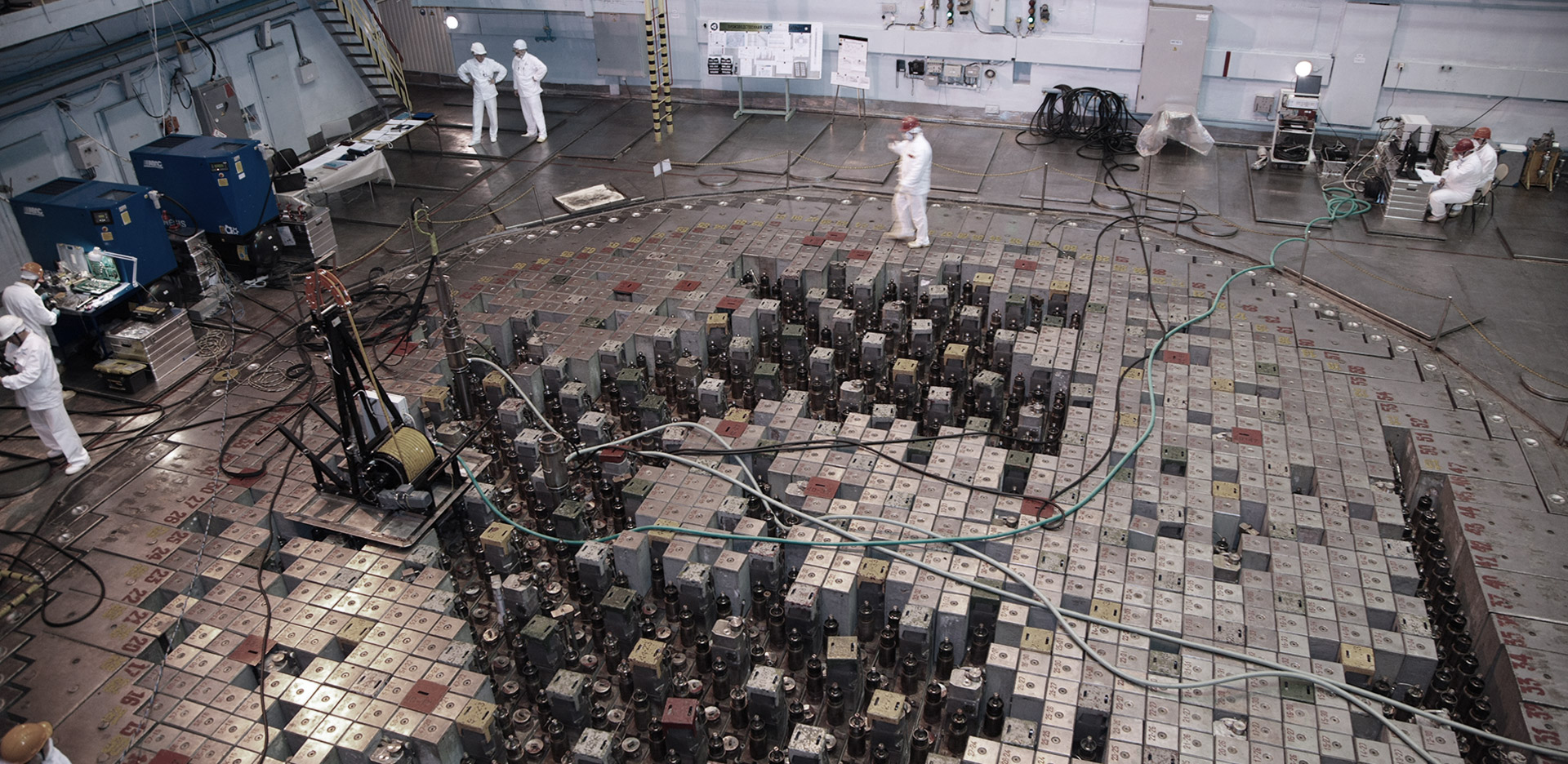
Первый в истории ядерный взрыв был произведен летом 1945 году в пустыне Аламогордо в США. Спустя четыре года атомную бомбу на Семипалатинском полигоне впервые испытал СССР.
Советский Союз, разрушенный войной, не жалел ресурсов и денег на «Изделие 501», потому что после американской атомной бомбардировки японских городов Хиросима и Нагасаки встал вопрос о безопасности нашей страны. Первый план удара по СССР «Пинчер» (клещи) появился в 1946 году и предполагал сброс 50 атомных бомб на 20 советских городов. Для проведения ядерных исследований и их реализации привлекались специалисты из послевоенной Германии. При этом в США не ожидали, что в СССР атомная бомба появится так скоро — по их оценкам, Советский Союз должен был обзавестись ядерным оружием не раньше 1952 года.
Только после решения оборонных задач, советские ученые получили возможность использовать ядерные технологии в мирных целях. Наиболее перспективным применение ядерных технологий считается в электроэнергетике, где мирный атом обеспечивает доступ к практически универсальному источнику энергии. Важнейшим условием развития таких технологий является безопасность.
«Лично я убежден в том, что человечество нуждается в ядерной энергии. Она должна развиваться, но при абсолютных гарантиях безопасности», — говорил академик Андрей Сахаров.
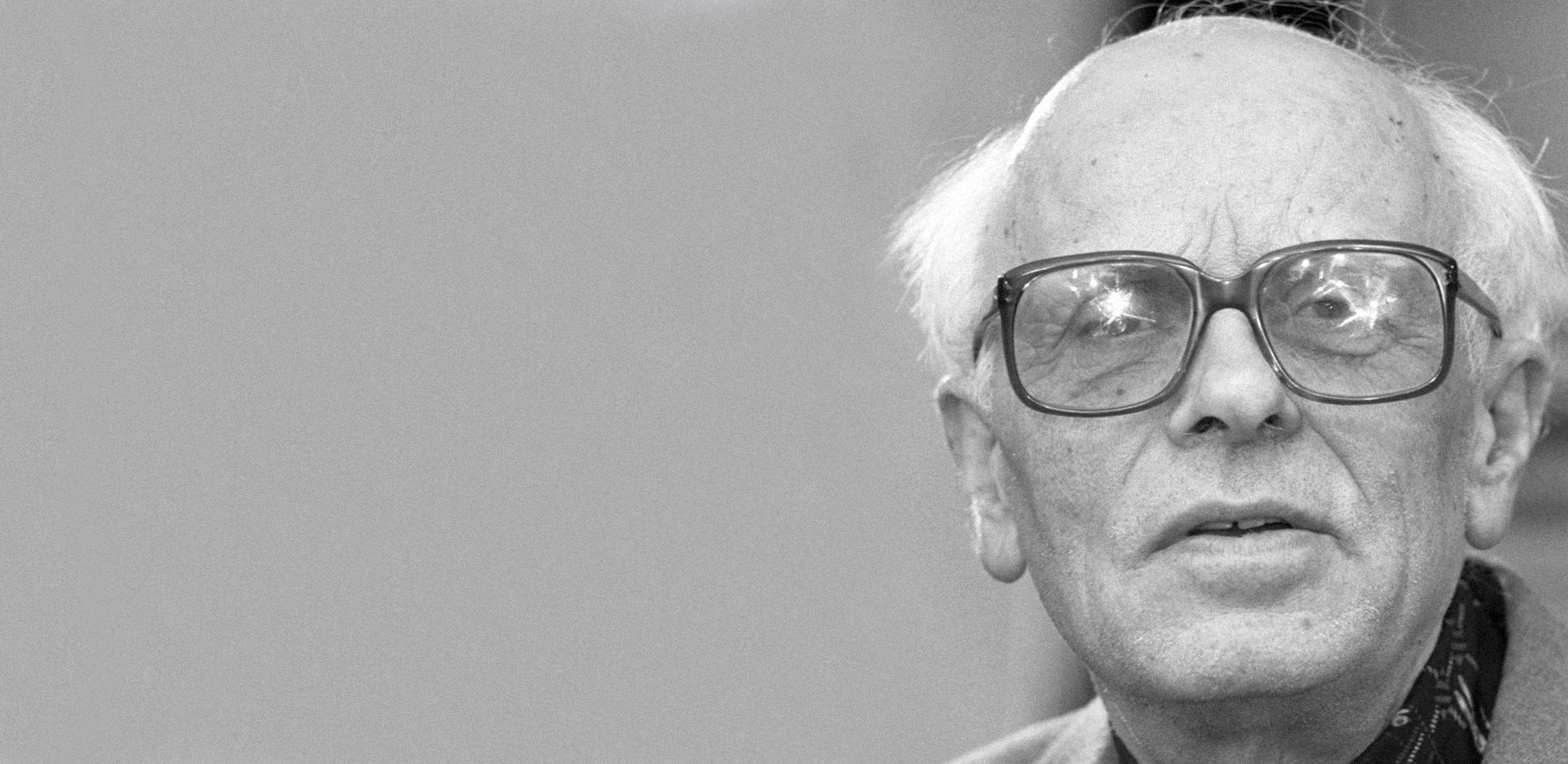
От бомбы к реактору
Ядерные реакторы, применяемые в атомных электростанциях, устроены намного сложнее атомных бомб. Основой атомной станции является реактор, куда загружают ядерное топливо и где протекает управляемая цепная реакция. Как правило используют обогащенный уран (с повышенным содержанием изотопа уран-235), который делится медленными (тепловыми) нейтронами. Выделяемое в результате тепло отводится из активной зоны реактора теплоносителем, чаще всего водой или жидким металлом, как в реакторах на быстрых нейтронах. Эта тепловая энергия используется для получения водяного пара в парогенераторе, после чего через парогенератор преобразуется в электроэнергию.
АЭС стали идеальной альтернативой газовым и угольным станциям, так как при их работе в атмосферу не выбрасывается CO2. В целом, при соблюдении технологии строительства и эксплуатации влияние АЭС на окружающую среду значительно меньше, чем других технологических объектов. К примеру, из 1 килограмма урана можно получить 620 тысяч киловатт-часов электроэнергии, что в 88 тысяч раз больше, чем при сжигании угля.
Первый в мире атомный реактор, в котором была осуществлена самоподдерживающаяся ядерная реакция, заработал в 1942 году в США. Эта установка позволила ученым приступить к реализации «Манхэттенского проекта», в ходе которого Соединенные Штаты создали свои первые атомные бомбы.
Однако приоритет в развитии гражданских атомных реакторов принадлежал Советскому Союзу.
Одновременно с испытаниями бомбы в СССР начались работы по созданию первой в мире АЭС. Обнинская станция проработала 48 лет, а основную роль в реализации проекта играл советский физик Игорь Курчатов. Обнинская АЭС заложила основы ядерной энергетики в России. «С легким паром!» — сказали на пуске этой гражданской электростанции академики Игорь Курчатов и Анатолий Александров, одни из организаторов атомной науки в Советском Союзе.
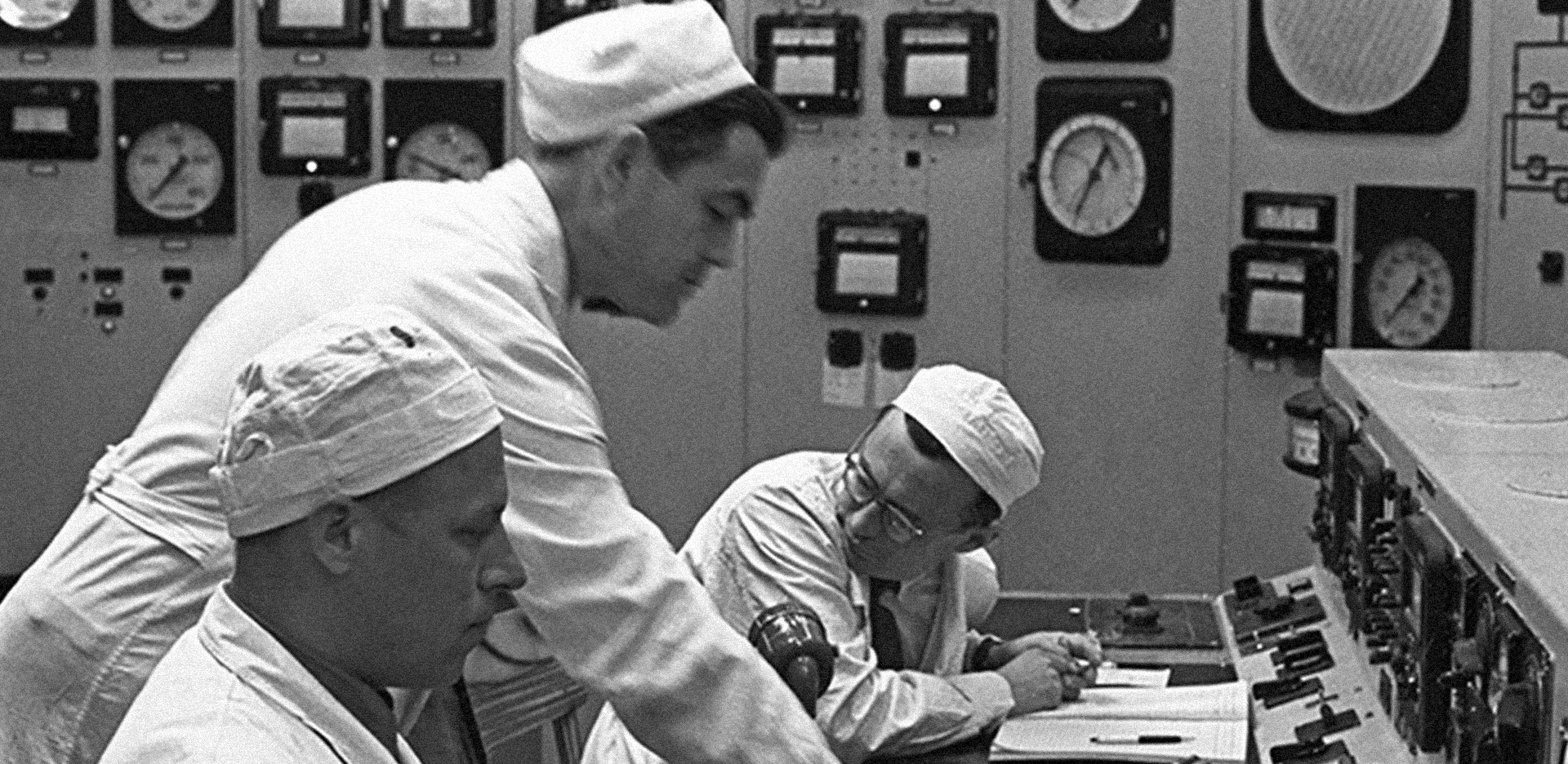
Затем СССР начал масштабную программу строительства АЭС по всей стране и за рубежом. В октябре 1966 года была введена в эксплуатацию первая такая станция — в городе Райнсберг, ГДР. В 1970-х — начале 1980-х годов производственные объединения «Атомэнергоэкспорт» и «Зарубежатомэнергострой» вели строительство АЭС в Болгарии, Финляндии, Чехословакии, Венгрии, на Кубе и в других странах.
Однако в 1990-х отрасль стагнировала, некоторые из этих проектов заморозили или закрыли, и после распада СССР в России осталось 80 процентов всех АЭС Советского Союза — девять атомных электростанций из пятнадцати с 28 энергоблоками.
Рост возобновился в 2000-х годах. Так, в 2001 году состоялся физический пуск первого энергоблока Ростовской АЭС. Впоследствии на электростанции были запущены еще три энергоблока. К настоящему времени Ростовская АЭС — одна из крупнейших атомных электростанций России, обеспечивающая около половины электрогенерации на юге страны.
На самообеспечении
С момента появления АМ-1 на Обнинской АЭС сменилось три поколения реакторов и отрасль ушла далеко вперед. Следующим большим шагом станет переход к реакторам на быстрых нейтронах. Помимо того, что они работают с другой топливной смесью, они еще способны нарабатывать ядерные материалы и дожигать высокоактивные отходы. В таком атомном реакторе нет привычных замедлителей, а в качестве теплоносителя используется жидкий металл.
Основным преимуществом реакторов на быстрых нейтронах является возможность перехода на замкнутый цикл использования ядерного топлива. В итоге их можно использовать не только для электроснабжения, но и для получения нового ядерного топлива, что существенно расширяет топливную базу ядерной энергетики.
В России первый исследовательский ядерный реактор на быстрых нейтронах БР-1 заработал в 1955 году в том же Обнинске. Это позволило уже спустя год провести первую в Европе цепную реакцию деления плутония на быстрых нейтронах, а также продемонстрировать возможность расширенного воспроизводства ядерного топлива. БР-1 работает и по сей день, его используют в метрологических целях как источник нейтронов и гамма-лучей.
В области реакторов на быстрых нейтронах Россия занимает лидирующее положение не только по их числу, но и по практическому внедрению таких установок. Так, на Белоярской АЭС работают единственные в мире промышленные реакторы на быстрых нейтронах БН-600 и БН-800. В нескольких странах работают лишь исследовательские установки.
В 2022 году планируется обеспечить эксплуатацию реактора на быстрых нейтронах (реактор БН-800) с использованием исключительно МОКС-топлива. Сырьем для его производства выступит оксид плутония, наработанный в энергетических реакторах, и оксид обедненного урана, полученный путем обесфторивания гексафторида обедненного урана (ОГФУ), что станет наглядной демонстрацией замыкания ядерного топливного цикла.
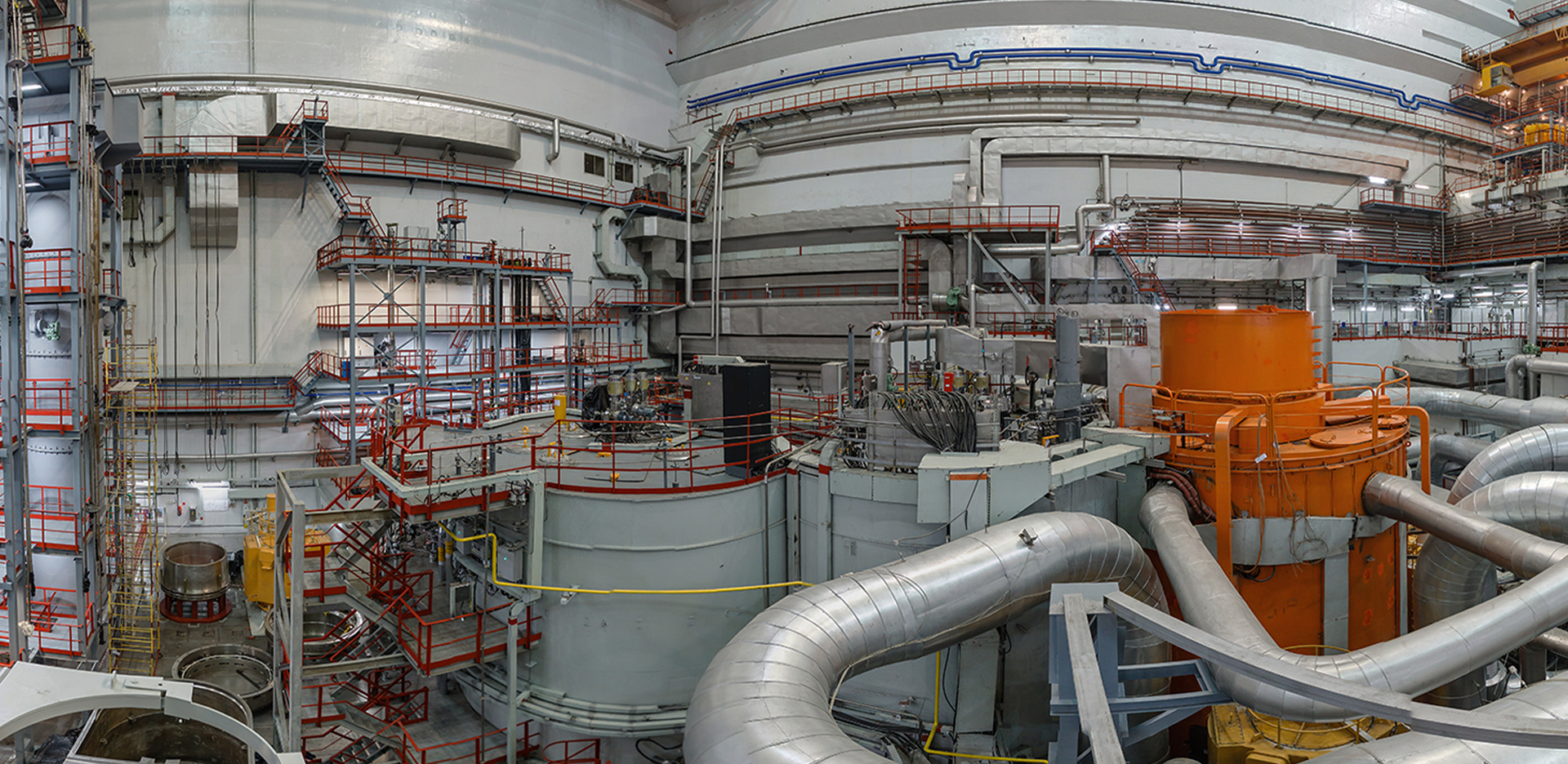
Универсальная станция
Число действующих ядерных энергоблоков в мире составляет 441. Более половины всей вырабатываемой в мире на АЭС электроэнергии приходится на Соединенные Штаты и Францию. В России на десяти атомных электростанциях генерируется почти 20 процентов всей электроэнергии страны. Причем в европейской части страны этот показатель составляет 40 процентов, а суммарная мощность всех 38 энергоблоков российских АЭС превышает 30 гигаватт (30 миллиардов ватт). Еще три энергоблока АЭС строятся.
В 2019 году российскими АЭС был установлен новый рекорд по выработке электроэнергии — более 208,7 миллиарда киловатт-часов.
Почти половину этого показателя обеспечили Ростовская, Калининская и Балаковская АЭС. Еще раньше, в 2016 году, Россия первой в мире ввела в эксплуатацию энергоблок поколения 3+ на Нововоронежской АЭС-2. Это стало одним из важнейших событий года в сфере атомной энергетики.
«Россия — первая, кто построил такой блок. Таким образом, НВАЭС-2 становится референтной для всех, потому что большая часть наших покупателей, собственно, на вопрос: „А что вы хотите купить?“ — говорят: „Вот такое же. Сделайте нам такое же, как у себя“. Что ж, прекрасно», — заявлял председатель Наблюдательного совета Госкорпорации «Росатом» Сергей Кириенко.
Постоянное совершенствование и полный цикл обслуживания помогают России продвигать собственные ядерные технологии на международный рынок. Россия выполняет заказы на строительство 36 блоков от иностранных партнеров, среди которых Китай, Индия, Бангладеш, Белоруссия, Финляндия, Венгрия и Египет. Строительство АЭС за рубежом позволяет загрузить предприятия госкорпорации внутри страны.
Северный атом
Развитие атомной энергетики в России происходит параллельно с освоением Севера. Для замены угольной Чаунской ТЭЦ и Билибинской АЭС — единственной атомной станции, расположенной в зоне вечной мерзлоты — в России создали уникальный проект плавучей атомной электростанции (ПАТЭС).
ПАТЭС «Академик Ломоносов» проекта 20870 с водо-водяным реактором КЛТ-40С ввели в промышленную эксплуатацию в мае 2020 года. В настоящее время ПАТЭС находится в порту города Певек на Чукотке и является самой северной АЭС в мире.
Такой формат АЭС выглядит самым привлекательным для многих стран мира, так как крупные и мощные блоки АЭС, которые сейчас строит «Росатом», для них избыточны. И проект ПАТЭС может стать референтным на рынке АЭС малой и средней мощности.
Электростанция способна обеспечить теплом, электричеством и пресной водой до 100 тысяч человек, а ее срок службы — 35-40 лет. Для персонала (около 70 человек) на «Академике Ломоносове» созданы самые комфортные условия: в распоряжении сотрудников плавучей АЭС имеются спортивный комплекс, библиотека и салон отдыха.
«Это — один из главных результатов. Он крайне важен для нас как подтверждение на деле нашего лидерства в реакторных технологиях. Он важен и для всего всемирного технологического ландшафта атомной энергетики, потому что это то, о чем сейчас говорят практически все страны — и обладающие ядерными технологиями, и новички. Наши реакторы, которые работают на плавучей станции, имеют очень большие референции в двигательных установках, судовых установках. Вот в этом очень большой вектор развития всей будущей атомной энергетики», — сказал об «Академике Ломоносове» гендиректор «Росатома» Алексей Лихачев.
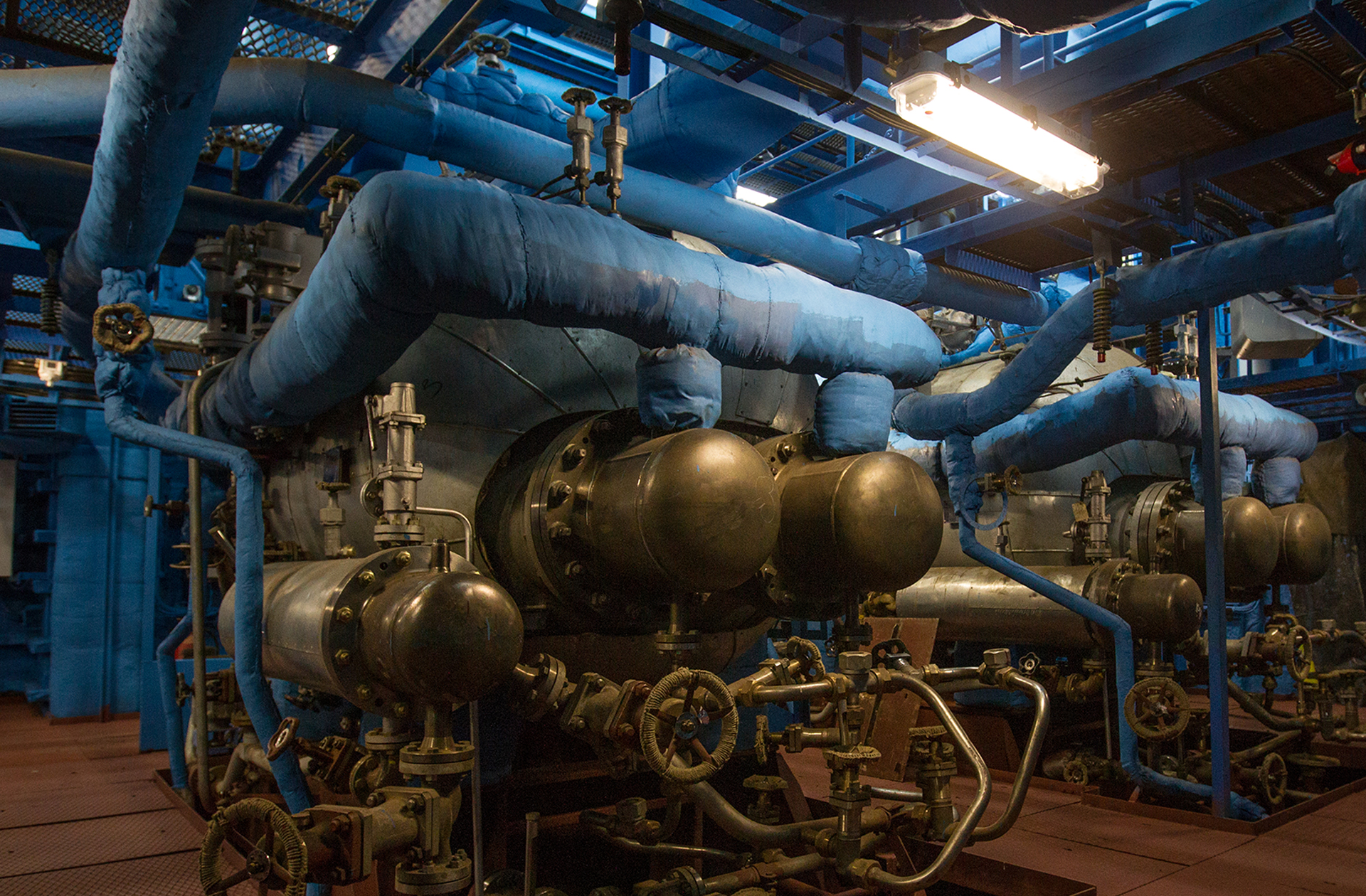
***
За 70 лет своего развития атомная энергетика прошла огромный путь. Сейчас на атомные электростанции (АЭС) приходится до десятой части вырабатываемой на планете электроэнергии, а к середине века этот показатель может удвоиться.
Россия обладает одними из самых конкурентных атомных технологий на планете и способна обеспечить весь цикл производства АЭС, начиная от добычи топлива и заканчивая обслуживанием станций. Лидерство России признается и Соединенными Штатами.
«На рынках ядерных материалов и технологий господствует Россия, — говорится в докладе Минэнергетики США. — Россия усиливает экономическое и внешнеполитическое влияние по всему миру, располагая зарубежными заказами на реакторы на сумму 133 миллиарда долларов».
С постоянным ростом населения Земли все сильнее будет ощущаться нехватка электроэнергии. Уже сейчас, по данным ООН, 20 процентов мирового населения не имеет доступ к электричеству, и для решения этой проблемы необходим экологичный и доступный источник. Чтобы покрыть эту потребность не хватит никаких ветряков и солнечных панелей, а углеродная энергетика загрязняет окружающую среду и лишь усугубляет проблему глобального потепления. Тем временем атомная отрасль движется к возобновляемым и безопасным ресурсам, что позволит стать АЭС не просто одним из источников энергии, а самым эффективным и безопасным.
Построенный под западными трибунами футбольного поля Чикагского университета и включенный 2 декабря 1942 года, Chicago Pile-1 (CP-1) был первым в мире ядерным реактором. Он состоял из графитовых и урановых блоков, а так же имел кадмиевые, индиевые и серебряные регулирующие стержни, но не имел никакой защиты от радиации и системы охлаждения. Научный руководитель проекта, физик Энрико Ферми, описал СР-1 как «сырая куча черных кирпичей и деревянных брёвен».
Работа над реактором была начата 16 ноября 1942 года. Была проделана сложная работа. Физики и сотрудники университета работали круглосуточно. Они построили решётку из 57 слоёв оксида урана и урановых слитков, встроенных в графитовые блоки. Деревянный каркас поддерживал конструкцию. Протеже Ферми, Леона Вудс – единственная женщина на проекте – вела тщательные измерения по мере «роста кучи».
2 декабря 1942 года реактор был готов к тесту. Он содержал 22 000 урановых слитков и на него ушло 380 тонн графита, а так же 40 тонн оксида урана и шесть тонн металлического урана. На создание реактора ушло 2,7 млн долларов. Эксперимент начался в 09-45. На нём присутствовали 49 человек: Ферми, Комптон, Сцилард, Зинн, Хиберри, Вудс, молодой плотник, который изготовил графитовые блоки и кадмиевые стержни, медики, обычные студенты и другие учёные.
Три человека составляли «отряд смертников» — они были частью системы безопасности. Их задача состояла в том, чтобы потушить пожар, если что-то пойдёт не так. Было и управление: регулирующие стержни, которыми управляли вручную и аварийный стержень, который был привязан к перилам балкона над реактором. В случае аварийной ситуации верёвку должен был перерезать специально дежуривший на балконе человек и стержень бы погасил реакцию.
В 15-53, впервые в истории, началась самоподдерживающаяся цепная ядерная реакция. Эксперимент увенчался успехом. Реактор проработал 28 минут.
Источник: Gizmodo.
09:00 25.12.2016
(обновлено: 02:06 03.03.2020)
https://ria.ru/20161225/1484533763.html
Начало атомной эры: 70 лет назад был пущен первый советский реактор Ф-1
Начало атомной эры: 70 лет назад был пущен первый советский реактор Ф-1 — РИА Новости, 03.03.2020
Начало атомной эры: 70 лет назад был пущен первый советский реактор Ф-1
Семидесятилетний юбилей пуска первого отечественного ядерного реактора Ф-1, созданного для реализации советского атомного проекта, отмечается в воскресенье… РИА Новости, 25.12.2016
2016-12-25T09:00
2016-12-25T09:00
2020-03-03T02:06
/html/head/meta[@name=’og:title’]/@content
/html/head/meta[@name=’og:description’]/@content
https://cdnn21.img.ria.ru/images/148452/76/1484527632_0:253:1762:1244_1920x0_80_0_0_838dc51a3991029c1e1d1f9984b06a39.jpg
россия
РИА Новости
internet-group@rian.ru
7 495 645-6601
ФГУП МИА «Россия сегодня»
https://xn--c1acbl2abdlkab1og.xn--p1ai/awards/
2016
РИА Новости
internet-group@rian.ru
7 495 645-6601
ФГУП МИА «Россия сегодня»
https://xn--c1acbl2abdlkab1og.xn--p1ai/awards/
Новости
ru-RU
https://ria.ru/docs/about/copyright.html
https://xn--c1acbl2abdlkab1og.xn--p1ai/
РИА Новости
internet-group@rian.ru
7 495 645-6601
ФГУП МИА «Россия сегодня»
https://xn--c1acbl2abdlkab1og.xn--p1ai/awards/
https://cdnn21.img.ria.ru/images/148452/76/1484527632_0:88:1762:1410_1920x0_80_0_0_0e746d57588826b60248dbc83e4e7235.jpg
РИА Новости
internet-group@rian.ru
7 495 645-6601
ФГУП МИА «Россия сегодня»
https://xn--c1acbl2abdlkab1og.xn--p1ai/awards/
РИА Новости
internet-group@rian.ru
7 495 645-6601
ФГУП МИА «Россия сегодня»
https://xn--c1acbl2abdlkab1og.xn--p1ai/awards/
международный форум «атомэкспо 2017», россия
Ядерные технологии, Международный Форум «Атомэкспо 2017», Россия
МОСКВА, 25 дек — РИА Новости. Семидесятилетний юбилей пуска первого отечественного ядерного реактора Ф-1, созданного для реализации советского атомного проекта, отмечается в воскресенье. Реактор, построенный в Москве на территории Лаборатории №2 Академии наук СССР (ныне Национальный исследовательский центр «Курчатовский институт»), дал начало созданию многих мирных ядерных направлений, в которых Россия сейчас занимает лидирующие позиции.
Михаил Ковальчук: первый советский ядерный реактор Ф-1 помог сохранить мир
Создание и пуск реактора Ф-1 в тяжелейших для страны послевоенных условиях – это демонстрация своевременности принятия руководством государства стратегически правильных решений, отметил в интервью РИА Новости президент Курчатовского института Михаил Ковальчук.
«Пуск Ф-1 стал и отправной точкой для очень быстрого, стремительного развития атомной науки и техники, атомной промышленности страны», — сказал Ковальчук.
Как все начиналось
Датой начала советского атомного проекта считается 28 сентября 1942 года, когда было подписано постановление Государственного комитета обороны «Об организации работ по урану». Документом предписывалось возобновить в Советском Союзе работы по исследованию возможности использования атомной энергии.
В феврале 1943 года вышло постановление ГКО об организации работ по использованию атомной энергии в военных целях. Научным руководителем советского атомного проекта был назначен один из основоположников физики атомного ядра в СССР, профессор Ленинградского физико-технического института Игорь Курчатов.
Иран и «шестерка» посредников опубликовали документы по ядерному соглашению
В апреле того же года было подписано распоряжение по Академии наук СССР о создании под руководством Курчатова Лаборатории №2 АН СССР. Лаборатории выделили большой участок земли площадью 120 гектаров в столичном районе Покровского-Стрешнева — в то время это была северо-западная окраина Москвы.
В качестве ядерной «взрывчатки» в атомной бомбе можно использовать плутоний-239, нарабатываемый в ядерных реакторах путем облучения урана, или оружейный обогащенный уран-235.
Курчатов понимал, что быстрее и дешевле сделать первую советскую атомную бомбу с начинкой из плутония. А фактор времени был решающим – после того как США в августе 1945 года подвергли атомной бомбардировке японские города Хиросиму и Нагасаки, стало ясно, что над Советским Союзом, только что пережившим страшную войну, нависла новая, по существу смертельная угроза. Требовалось ликвидировать монополию США на обладание атомным оружием и тем самым предотвратить возможность одностороннего военного конфликта с его безнаказанным применением, тем более что Вашингтон разработал планы атомного удара по СССР.
«Физический первый»
Но для того чтобы строить свой первый реактор-наработчик оружейного плутония, надо было создать и пустить относительно небольшой экспериментальный реактор, или, как он тогда назывался, котел – прототип будущих промышленных реакторов.
«Росатом» модернизировал научный комплекс для создания «реакторов будущего»
Именно на территории Лаборатории №2 было решено построить такой уран-графитовый ядерный реактор, получивший индекс Ф-1 («физический первый»). С учетом тяжелейших условий послевоенных лет это была задача огромной трудности.
Во-первых, опыта проектирования и строительства ядерного реактора у советских ученых и инженеров не было. Для реактора требовались уран, графит, новые конструкционные материалы. К ним предъявлялись неслыханные до того требования по качеству, чистоте, так как малейшие примеси поглощают нейтроны и цепная ядерная реакция в реакторе попросту обрывалась бы. Во-вторых, для строительства первого реактора надо было разработать математическую модель его конструкции, создать необходимые методы расчетов.
Работы велись одновременно по многим направлениям. К ним были привлечены многие академические и ведомственные научно-исследовательские и проектные институты, а также несколько заводов. В частности, урановые блочки (небольшие по размеру цилиндры из металлического урана) выпускались на заводе №12 в Электростали (сейчас это предприятие госкорпорации «Росатом» «Машиностроительный завод»).
Урана, которого требовались сотни тонн, в СССР тогда практически не было. Из Германии вывезли найденные там остатки немецкого урана и его руды (основная его доля досталась американцам). По всему Советскому Союзу организовали геологические экспедиции для поиска месторождений урана, рудники появились в Средней Азии и на Украине.
В СФ заявили, что Россия не будет ввязываться в гонку ядерных вооружений
Для реактора Ф-1 под руководством знаменитого советского архитектора Алексея Щусева проектировалось особое здание, с целью сохранения секретности получившее название «Монтажные мастерские». Поскольку ученые понимали, что от реактора во время его работы будет идти сильное радиоактивное излучение, большую часть здания решили разместить ниже уровня земли. Здание с шахтой для реактора глубиной 10 метров, надежной биологической защитой, приборами внутреннего и внешнего дозиметрического контроля, дистанционным управлением реактором закончили строить летом 1946 года.
Сборка реактора велась чрезвычайно тщательно, так как даже малейшая погрешность могла серьезно повлиять на его работу. Активная зона реактора сооружалась из графитовых блоков, в которых было просверлено около 30 тысяч отверстий для урановых блочков. Полная структура реактора выглядела как кубическая решетка урана, погруженная в графитовую сферу диаметром шесть метров.
Общий вес графитовой кладки в реакторе составлял более 400 тонн, а урана — почти 50 тонн. Сборку реактора Ф-1 вели горизонтальными слоями, начиная со дна шахты.
Пуск реактора
Российский сенатор прокомментировал слова Трампа о ядерном оружии
Сборка началась в середине ноября 1946 года. По предварительным расчетам, для того чтобы достичь рабочего (на языке атомщиков – критического) состояния реактора, требовалось выложить около 70 слоев графитовых блоков, в которые вставляли урановые цилиндрики. Но ученые понимали опасность слепого доверия к расчетным данным, так как цепная реакция могла развиться и раньше планируемого времени.
Поэтому сборку вели очень осторожно, постоянно наблюдая за уровнем нейтронного потока внутри уран-графитовой конструкции. Начиная с 38-го слоя каждый следующий слой укладывали только при опущенных в активную зону реактора стержнях аварийной защиты, назначение которых — поглощать нейтроны и тем самым гасить цепную реакцию. Затем стержни аккуратно поднимали и замеряли уровень потока нейтронов. Далее стержни вновь опускали, а сборку продолжали. Как вспоминали участники тех работ, после 50-го слоя Курчатов практически не выходил из здания реактора.
Новые расчеты предсказывали, что цепная реакция начнется на 61-м слое, он был собран к вечеру 24 декабря. Курчатов попытался начать пуск, но приборы показали, что надо все-таки класть еще один слой графита.
Его выкладка закончилась днем 25 декабря. Перед тем как поднять аварийные стержни, еще раз тщательно проверили все системы безопасности. Курчатов приказал всем, кто не имел непосредственного отношения к пуску, на всякий случай покинуть здание, а сам сел за пульт управления реактором.
Росатом обосновал эффективность технологий «реакторов будущего»
Пуск велся с предельной осторожностью. Нарастание мощности реактора фиксировалось приборами и «щелкуном» – громкоговорителем, с которым были соединены счетчики нейтронного потока. Сначала раздались отдельные щелчки, потом их стало больше и больше, и наконец, дробь в громкоговорителях превратилась в сплошной гул. А лично проведенные Курчатовым расчеты показывали, что впервые на Евроазиатском континенте осуществлена управляемая самоподдерживающаяся цепная ядерная реакция. Это произошло в 18 часов 25 декабря.
Таким образом, стало ясно, что советские ученые успешно решили задачу проектирования, строительства, пуска и управления работой ядерного реактора. Тем самым открылась возможность для создания «оружейных» реакторов, а также установок для использования атомной энергии в мирных целях. «Атомная энергия теперь подчинена воле советского человека», — сказал тогда Курчатов.
Пуск реактора Ф-1 отметили у Курчатова дома – он жил на территории Лаборатории №2. Участники пуска с радостью и криками «ура» выпили по бокалу шампанского. Для более пышных торжеств не было ни сил, ни времени – уже на следующий день работа реактора была продемонстрирована куратору советского атомного проекта, заместителю председателя Совета министров СССР Лаврентию Берии.
Двадцать восьмого декабря на имя главы советского правительства Иосифа Сталина была направлена докладная записка об успешном пуске реактора Ф-1, подписанная в том числе Берией и Курчатовым.
В России успешно прошли испытания ядерного топлива для «реакторов будущего»
«С помощью построенного физического уран-графитового котла мы теперь в состоянии решить важнейшие вопросы промышленного получения и использования атомной энергии, которые до сего времени рассматривались только предположительно, на основании теоретических расчетов», – такими словами заканчивался этот документ.
А 9 января 1947 года Сталин в своем кремлевском кабинете принял руководителей как атомного проекта в целом, так и основных его направлений, и провел совещание, на котором обсуждалось состояние научно-исследовательских работ по использованию атомной энергии. От Лаборатории №2 выступали Игорь Курчатов, Юлий Харитон (главный конструктор первой советской атомной бомбы), Исаак Кикоин и Лев Арцимович (они занимались вопросами обогащения урана).
На основе опыта эксплуатации Ф-1 под руководством Курчатова был построен и пущен в июне 1948 года на Южном Урале на комбинате №817 (ныне – «Производственное объединение «Маяк» Росатома, ЗАТО Озерск, Челябинская область) первый промышленный реактор для наработки плутония, необходимого для создания первого отечественного атомного заряда РДС-1. Заряд был успешно испытан 29 августа 1949 года на Семипалатинском полигоне. Ядерно-оружейная монополия США была ликвидирована.
Росатом готов выполнять проекты по ядерной медицине вместе с Белоруссией
«Реализация в очень сжатые сроки, с невероятным напряжением сил и средств, советского атомного проекта, самым первым этапом которого был пуск реактора Ф-1, позволила восстановить ядерный паритет», — сказал в интервью РИА Новости Михаил Ковальчук.
«До сих пор мир живет без глобальной войны только потому, что есть баланс сил. И Россия по сей день сохранилась как суверенное государство потому, что тогда, в тяжелейшее время, руководство страны и передовая наука нашли взаимное понимание перед стоящей угрозой. Для нас, нынешних, те события служат примером того, как государство должно выбирать и сочетать тактические и стратегические приоритеты, в том числе научно-технологические», — сказал он.
«Курчатовское древо реакторов»
После того, как основы отечественной атомной промышленности были созданы, реактор Ф-1 решили не разбирать, как это сделали американцы со своим первым реактором, пущенным в 1942 году. Время показало правильность решения оставить Ф-1 «в строю».
На Ф-1 в дальнейшем выполнялись многие фундаментальные исследования в области ядерной физики, реакторостроения, радиационного материаловедения, ядерной безопасности и многого другого. Ф-1 стал центром коллективного пользования для ученых многих специальностей, незаменимым объектом для междисциплинарных исследований.
Путин: Россия строго соблюдает договоренности в ядерной сфере
Фактически, на основе Ф-1 была создана огромная ветвь (или, как называют его сами атомщики, — «курчатовское древо») новых ядерных реакторов для разных направлений – и для атомных электростанций, и для атомных подводных лодок, и для атомных ледоколов.
В 1957 году на воду была спущена первая советская атомная подводная лодка К-3 «Ленинский комсомол», а в 1959 году был принят в эксплуатацию первый в мире атомный ледокол «Ленин». И сегодня Россия – обладатель единственного в мире атомного ледокольного флота, который гарантирует стратегическое российское присутствие в северных широтах, где сосредоточены огромные запасы нефти, газа и биоресурсов.
А в 1954 году под руководством Курчатова в Обнинске была пущена первая в мире промышленная АЭС. Сейчас Росатом является мировым лидером по числу атомных энергоблоков, строящихся за рубежом. Реакторы ВВЭР – основной экспортный продукт Росатома, а научным руководителем проектов этих установок бессменно является Национальный исследовательский центр «Курчатовский институт». По ряду показателей реакторы ВВЭР считаются лучшими в мире. А развитие и совершенствование ядерных технологий, в том числе технологий этих реакторов – одно из ключевых направлений работы Курчатовского института.
Что касается реактора Ф-1, то в настоящее время он имеет статус памятника науки и техники. В дни юбилея его пуска состоится торжественная церемония открытия музея Ф-1.
Время на чтение 6 мин.
Что бы вы сделали, получив Нобелевскую премию? Физик Энрико Ферми, получивший премию по физике в 1938 году за открытие ядерных реакций, вызванных медленными нейтронами, решил потратить ее на переезд. В то время в Италии в полную силу разворачивался фашистский режим, и супруге Ферми, еврейке по национальности, становилось небезопасно жить в стране. Поэтому семья перебралась за океан — в США. Именно там открытие, сделанное Ферми еще на родине, получило практическое воплощение и повлияло на дальнейшую историю человечества.
Нейтрон — это сила!
В 1935 году Фредерик и Ирен Жолио-Кюри получили Нобелевскую премию по физике за «выполненный синтез новых радиоактивных элементов». В своих экспериментах они бомбардировали образцы бора, бериллия и алюминия альфа-частицами. В результате эти химические элементы превращались в новые — фосфор и азот, которые, в свою очередь, тоже были радиоактивными. Таким образом физики открыли путь к получению новых элементов искусственным путем.
Но французские физики не до конца поняли суть происходящих явлений. Они полагали, что радиация, возникающая в результате бомбардировки альфа-частицами, представляет собой ядро атома водорода, то есть протон. Однако другие исследователи с ними не согласились — в результате работавший в Кембридже Джеймс Чедвик предположил, что полученная радиация — это гипотетическая элементарная частица нейтрон, и доказал ее существование.
Основываясь на этих открытиях Энрико Ферми в 1934 году провел свои первые эксперименты в области ядерной физики, облучая образцы химических элементов нейтронами. Ученый понял, что нейтроны, будучи нейтрально заряженными, не будут отталкиваться ядрами атомов, поэтому являются лучшим «бомбардировочным материалом» для их расщепления. Также Ферми предположил, что в результате подобных экспериментов можно получить большое количество новых радиоактивных изотопов (вариантов одного химического элемента, имеющих разное количество нейтронов в ядре). В итоге человечество получило все предпосылки для открытия цепной реакции.
Неизвестно, по какому бы пути пошла дальнейшая история, если бы нобелевский комитет, известный своей нерасторопностью в награждении выдающихся ученых, промедлил с вручением премии Ферми. Как бы там ни было, но в 1939 году физик вместе с женой Лаурой и двумя детьми отправился в Стокгольм, после чего не вернулся в Италию, а эмигрировал в США. Там сразу пять университетов предложили ему профессорское место. Ферми выбрал Нью-Йорк и стал работать в Колумбийском университете.
Передаем по цепочке
В США Ферми продолжил исследование нейтронов и их участия в ядерных реакциях. В 1939 году физик предположил, что деление ядра урана приводит к испусканию быстрых нейтронов. Так называют нейтроны, чья кинетическая энергия больше какой-то установленной величины — для ядерных реакторов это, как правило, больше 0,1 мегаэлектронвольт. Кроме того, Ферми также предположил, что если число выпущенных электронов превысит число поглощенных, то можно будет говорить о самоподдерживающейся цепной реакции. В эксперименте теория подтвердилась — правда, на первых порах не удалось точно установить количество быстрых нейтронов, а следовательно, понять, хватит ли их для поддержания цепной реакции.
Чтобы применить теорию на практике, Ферми взялся за разработку уран-графитовой системы (уран был известен как радиоактивный от природы элемент, а графит было просто достать в больших количествах) и способов поддержания цепной реакции в ней. Для исследований и практической реализации этих наработок была основана секретная Металлургическая лаборатория Чикагского университета под руководством физика Артура Комптона. В нее вошли физики и химики, которые работали над всеми аспектами строительства реактора для поддержания цепной реакции. Конечной целью ставилось создание промышленного ядерного реактора для получения оружейного плутония.
Для начала самоподдерживающейся цепной реакции необходима некоторая минимальная масса делящегося вещества — критическая масса. Другая важная величина — это коэффициент размножения нейтронов, отношение числа нейтронов последующего поколения к предыдущему. Для поддержания реакции коэффициент должен равняться единице. Если он меньше единицы, то состояние системы называют подкритическим, и реакция затухает. Если больше единицы, то это надкритическое состояние, и реакция разгоняется.
Ученые Металлургической лаборатории экспериментировали с подкритическими состояниями уран-графитовой системы для того, чтобы определить, сколько материала им понадобится в результате. Наконец, после серии экспериментов, занявших больше года, к июню 1942 года удалось получить коэффициент размножения нейтронов больше единицы. Можно было приступать к строительству реактора.
Лаборатория под стадионом
Строительство реактора начали в подтрибунных помещениях пустовавшего на тот момент университетского стадиона Stagg Field. Так как Ферми опасался, что атмосферный азот будет эффективно поглощать нейтроны, реактор решили заключить в непроницаемую оболочку, из которой при необходимости можно было выкачать воздух. Ее создали на заводе Goodyear, изготавливавшем оболочки для аэростатов, — разумеется, там никто не знал, для чего они делают «квадратный воздушный шар».
Закрепив оболочку, ученые стали собирать реактор. Он представлял собой слои графитовых блоков. Блоки каждого второго слоя были полые и содержали внутри брикеты из оксида урана. На тот момент получение металлического урана было сопряжено с большими трудностями, поэтому его использовали только в центральной части реактора. Элементы для реактора создавали на месте — оксид урана прессовали на гидравлическом прессе, а графитовые блоки выпиливали на деревообрабатывающем станке.
В результате сооружение напоминало поленницу — поэтому первый реактор и прозвали «Чикагской поленницей». Для управления реакцией предусматривались регулирующие стержни из кадмия и бористой стали, эффективно поглощавшие нейтроны, — они управлялись с пульта. Также был вручную извлекавшийся стержень для запуска реактора и аварийный стержень. Последний просто висел на веревке над поленницей. В случае чего веревку можно было обрезать — стержень падал в реактор и глушил его. Системы охлаждения у реактора не было (вернее, предполагалось, что если штука сильно разогреется, то ее будут просто поливать водой). Не было и никакой биологической защиты — в результате непосредственно у реактора радиационный фон достигал 3 рентген в час (обычным считается уровень 10–20 микрорентген в час).
После укладки каждого слоя физики замеряли уровень нейтронов, чтобы понять, достигли ли они уже критической массы. 1 декабря 1942 года стало понятно, что можно начинать эксперимент по запуску реакции. К тому моменту высота «Чикагской поленницы» составляла шесть метров, на нее ушло 5,4 тонны металлического урана, 45 тонн оксида урана и 360 тонн графита.
2 декабря начался самый главный эксперимент. В его ходе была продемонстрирована первая в мире самоподдерживающаяся цепная реакция. Хотя она продолжалась всего 28 минут, а коэффициент размножения нейтронов лишь немного превысил единицу, «Чикагская поленница» подтвердила: цепная реакция возможна. Человечество сделало первый шаг к атомной эре.


